Archiv der Kategorie: My Collection
Creativity in motion: The modular robot Otto from HP Robots
The HP Robots Otto is a versatile, modular robot designed specifically for educational purposes. It offers students and teachers an exciting opportunity to immerse themselves in the world of robotics, 3D printing, electronics and programming. The robot was developed by HP as part of their robotics initiative and is particularly suitable for use in science, technology, engineering and mathematics (STEM) classes.
Key features of Otto:
- Modular design: Otto is a modular robot that allows students to build, program and customize it through extensions. This promotes an understanding of technology and creativity. The modular structure allows various components such as motors, sensors and LEDs to be added or replaced, which increases the learning curve for students.
- Programmability: The robot can be programmed with various programming languages, including block-based programming for beginners and Python and C++ for advanced programmers. This diversity allows students to continuously improve their coding skills and adapt to the complexity of the tasks.
- Sensors and functions: Equipped with ultrasonic sensors for obstacle detection, line tracking sensors and RGB LEDs, Otto offers numerous interactive possibilities. These features allow students to program complex tasks such as navigating courses or tracing lines. The sensors help to detect the environment and react accordingly.
- 3D printing and customizability: Students can design Otto’s outer parts themselves and produce them with a 3D printer. This allows for further personalization and customization of the robot. This creative freedom not only promotes technical understanding, but also artistic skills. Own parts can be designed and sensors can be attached to desired locations.
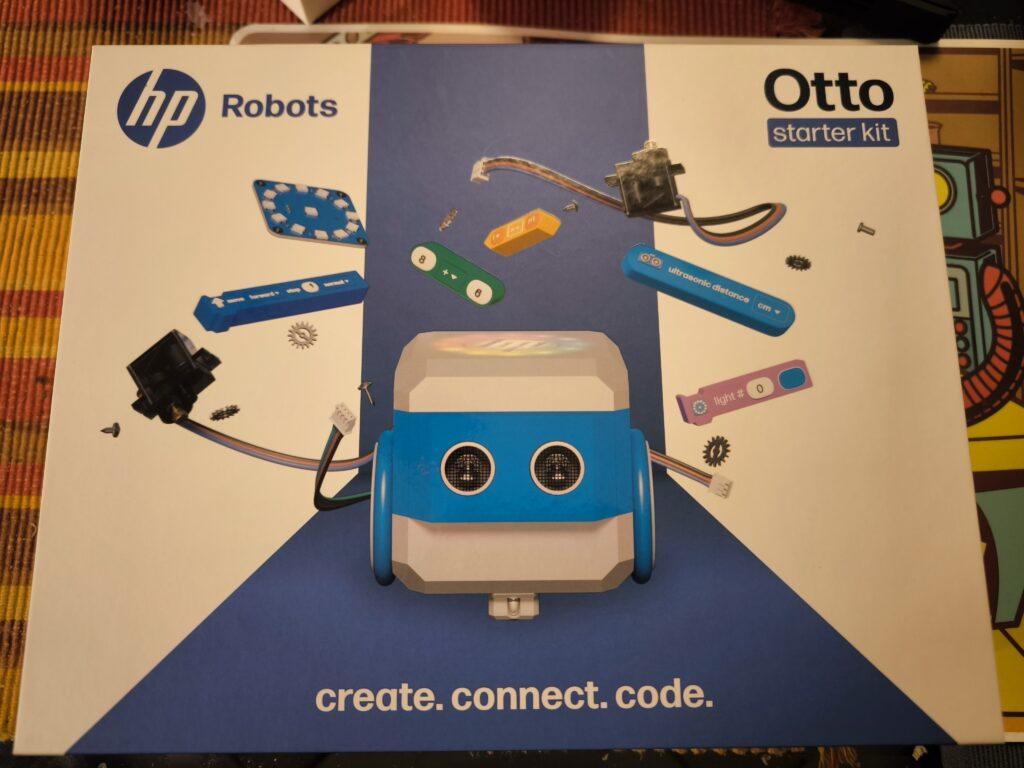
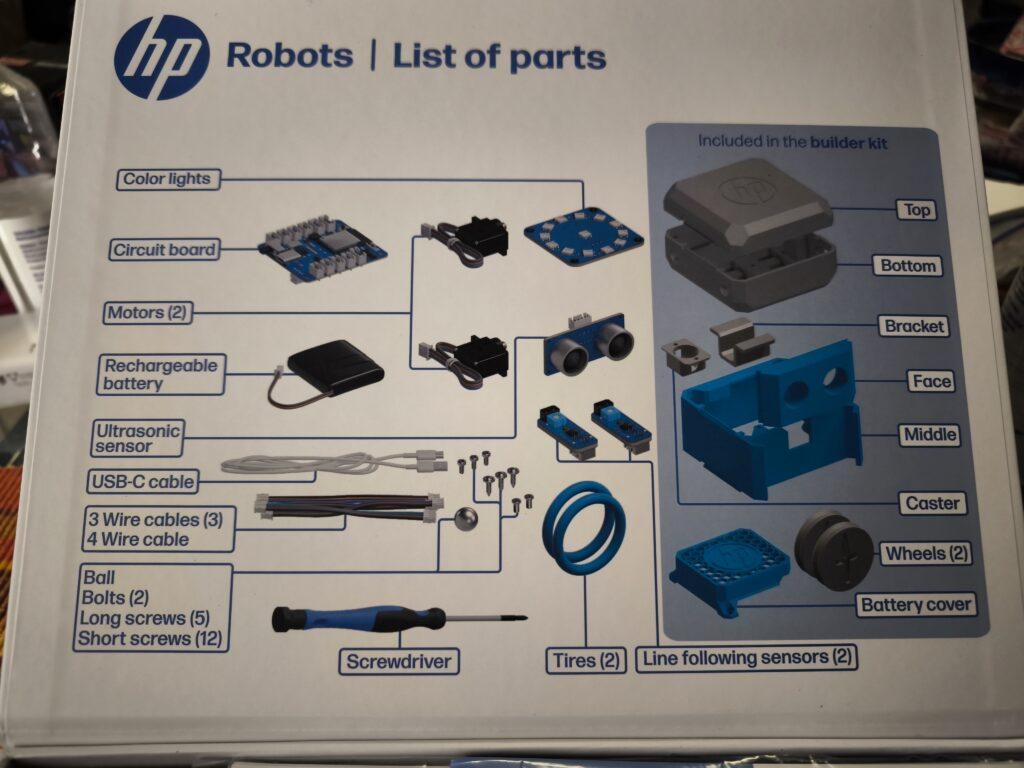
Educational approach:
Otto is ideal for use in schools and is aimed at students from the age of 8. Younger students can work under supervision, while older students from the age of 14 can also use and expand the robot independently. The kit contains all the necessary components to build a functioning robot, including motors, sensors, and a rechargeable battery.
Programming environments:
Otto is programmed via a web-based platform that runs on all operating systems. This platform offers different modes:
- Block-based programming: Similar to Scratch Jr., ideal for beginners. This visual programming makes it easier to get started in the world of programming and helps students understand basic concepts such as loops and conditions.
- Python: A Python editor is available for advanced users. Python is a popular language that works well for teaching because it is easy to read and write. Students can use Python to develop more complex algorithms and expand their programming skills.
- C++: Compatible with the Arduino IDE for users who have deeper programming knowledge. C++ offers a high degree of flexibility and allows students to access the hardware directly, allowing for their own advanced projects.
Expansion Kits:
In addition to the Starter Kit, there are several expansion kits. All expansion kits require the starter kit, as they are built on top of it.
Emote Expansion Kit:
- It includes components such as an LED matrix display, OLED display, and an MP3 player that allow the robot to display visual and acoustic responses.
- This kit is particularly suitable for creative projects where Otto should act as an interactive companion.
- The emote kit allows Otto to show emotions, mirror human interactions, and develop different personalities.
Sense Expansion Kit:
- With the Sense Kit, Otto can perceive its surroundings through various sensors.
- Included are sensors for temperature, humidity, light and noise as well as an inclination sensor. These enable a wide range of interactions with the environment.
- The kit is ideal for projects that focus on environmental detection and data analysis.
Interact Expansion Kit:
- The Interact kit expands Otto’s tactile interaction capability through modules such as push buttons, rotary knobs and accelerometers.
- It enables precise inputs and reactions, as well as measurement of acceleration.
- This kit is great for playful activities and interactive games.

Invent Expansion Kit:
- The Invent kit is specifically designed to encourage users‘ creativity. It allows the individual adaptation of Otto’s functionalities and design through 3D printing and additional modules as well as compatible clamping blocks.
- Users can design and print new accessories to make the robot unique.
- Equip Otto with legs and teach him to walk or make him fit for outdoor use off-road with chains.
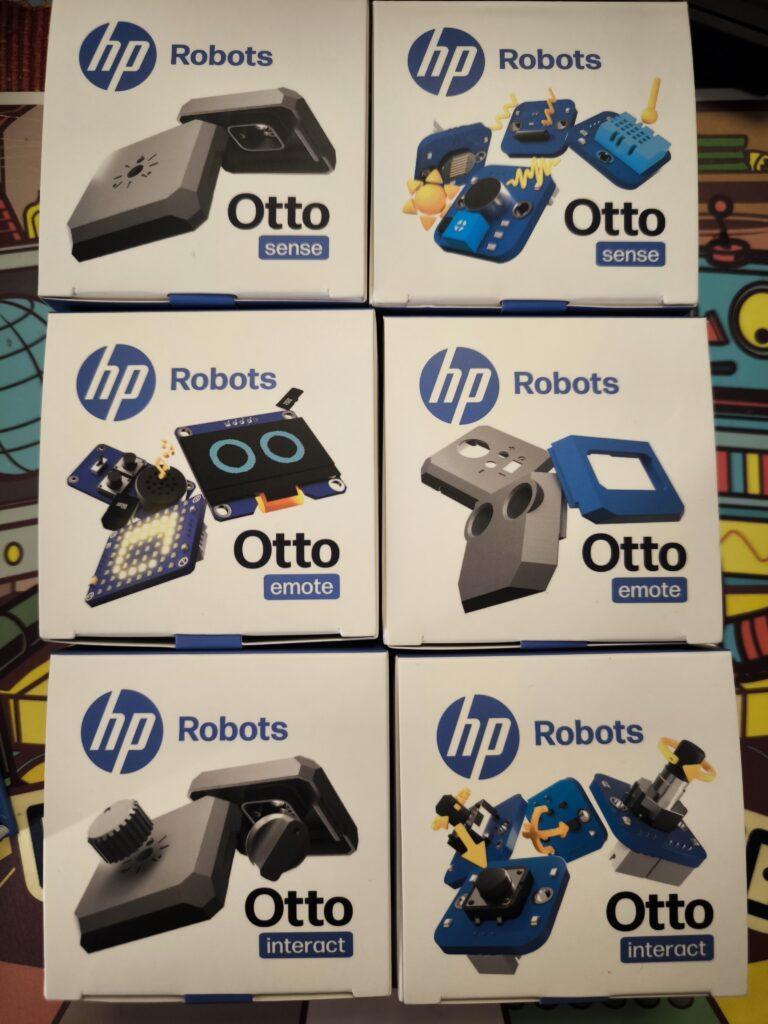
Use in the classroom:
Otto comes with extensive resources developed by teachers. These materials help teachers design effective STEM lessons without the need for prior knowledge. The robot can be used both in the classroom and at home. The didactic materials include:
- Curricula: Structured lesson plans that help teachers plan and execute lessons.
- Project ideas and worksheets: A variety of projects that encourage students to think creatively and expand their skills.
- Tutorials and videos: Additional learning materials to help students better understand complex concepts.
Conclusion:
The HP Robots Otto is an excellent tool for fostering technical understanding and creativity in students. Thanks to its modular design and diverse programming options, it offers a hands-on learning experience in the field of robotics and electronics. Ideal for use in schools, Otto provides teachers with a comprehensive platform to accompany students on an exciting journey into the world of technology. In particular, Otto’s versatility through the 3D-printed parts and expansion packs offers the opportunity to build the personal learning robot.
Kreativität in Bewegung: Der modulare Roboter Otto von HP Robots
Der HP Robots Otto ist ein vielseitiger, modularer Roboter, der speziell für Bildungszwecke entwickelt wurde. Er bietet Schülern und Lehrern eine spannende Möglichkeit, in die Welt der Robotik, 3D-Druck, Elektronik und Programmierung einzutauchen. Der Roboter wurde von HP als Teil ihrer Robotik-Initiative entwickelt und ist besonders für den Einsatz im MINT-Unterricht (Mathematik, Informatik, Naturwissenschaften und Technik) geeignet.
Hauptmerkmale von Otto:
- Modularer Aufbau: Otto ist ein modularer Roboter, der es Schülern ermöglicht, ihn zu bauen, zu programmieren und durch Erweiterungen individuell anzupassen. Dies fördert das Verständnis für Technik und Kreativität. Die modulare Struktur erlaubt es, verschiedene Komponenten wie Motoren, Sensoren und LEDs hinzuzufügen oder zu ersetzen, was die Lernkurve für Schüler erweitert.
- Programmierbarkeit: Der Roboter kann mit verschiedenen Programmiersprachen programmiert werden, darunter blockbasierte Programmierung für Anfänger sowie Python und C++ für Fortgeschrittene. Diese Vielfalt ermöglicht es Schülern, ihre Programmierfähigkeiten kontinuierlich zu verbessern und sich an die Komplexität der Aufgaben anzupassen.
- Sensoren und Funktionen: Ausgestattet mit Ultraschallsensoren zur Hinderniserkennung, Linienverfolgungssensoren und RGB-LEDs bietet Otto zahlreiche interaktive Möglichkeiten. Diese Funktionen ermöglichen es Schülern, komplexe Aufgaben wie das Navigieren durch Parcours oder das Verfolgen von Linien zu programmieren. Die Sensoren helfen dabei, die Umgebung zu erkennen und entsprechend zu reagieren.
- 3D-Druck und Anpassbarkeit: Schüler können Ottos äußere Teile selbst entwerfen und mit einem 3D-Drucker herstellen. Dies ermöglicht eine weitere Personalisierung und Anpassung des Roboters. Diese Kreativfreiheit fördert nicht nur technisches Verständnis, sondern auch künstlerische Fähigkeiten. Eigene Teile können entworfen und Sensoren an gewünschten Stellen angebracht werden.


Bildungsansatz:
Otto ist ideal für den Einsatz in Schulen gedacht und richtet sich an Schüler ab 8 Jahren. Jüngere Schüler können unter Aufsicht arbeiten, während ältere Schüler ab 14 Jahren den Roboter auch eigenständig nutzen und erweitern können. Das Kit enthält alle notwendigen Komponenten, um einen funktionierenden Roboter zu bauen, einschließlich Motoren, Sensoren und einer wiederaufladbaren Batterie.
Programmierumgebungen:
Die Programmierung von Otto erfolgt über eine webbasierte Plattform, die auf allen Betriebssystemen läuft. Diese Plattform bietet verschiedene Modi:
- Blockbasierte Programmierung: Ähnlich wie Scratch Jr., ideal für Anfänger. Diese visuelle Programmierung erleichtert den Einstieg in die Welt der Programmierung und hilft Schülern, grundlegende Konzepte wie Schleifen und Bedingungen zu verstehen.
- Python: Für fortgeschrittene Benutzer steht ein Python-Editor zur Verfügung. Python ist eine beliebte Sprache, die sich gut für den Unterricht eignet, da sie einfach zu lesen und zu schreiben ist. Schüler können mit Python komplexere Algorithmen entwickeln und ihre Fähigkeiten im Bereich der Programmierung erweitern.
- C++: Kompatibel mit der Arduino IDE für Nutzer, die tiefere Programmierkenntnisse haben. C++ bietet eine hohe Flexibilität und ermöglicht es Schülern, direkt auf die Hardware zuzugreifen, was eigene fortgeschrittene Projekte ermöglicht.
Expansion/Erweiterungs Kits:
Zusätzlich zum Starter Kit gibt es mehrere Erweiterungskits. Alle Erweiterungskits setzen das Starter-Kit voraus, da sie auf dessen Basis aufgebaut werden.
Emote Expansion Kit:
- Es enthält Komponenten wie ein LED-Matrix-Display, OLED Display und einen MP3-Player, die es dem Roboter ermöglichen, visuelle und akustische Reaktionen darzustellen.
- Dieses Kit eignet sich besonders für kreative Projekte, bei denen Otto als interaktiver Begleiter fungieren soll.
- Das Emote-Kit ermöglicht es Otto, Emotionen zu zeigen, menschliche Interaktionen zu spiegeln und verschiedene Persönlichkeiten zu entwickeln.
Sense Expansion Kit:
- Mit dem Sense-Kit kann Otto seine Umgebung durch verschiedene Sensoren wahrnehmen.
- Enthalten sind Sensoren für Temperatur, Luftfeuchtigkeit, Licht und Geräusche sowie ein Neigungssensor. Diese ermöglichen vielfältige Interaktionen mit der Umwelt.
- Das Kit ist ideal für Projekte, die sich auf Umwelterkennung und Datenanalyse konzentrieren.
Interact Expansion Kit:
- Das Interact-Kit erweitert Ottos Fähigkeit zur taktilen Interaktion durch Module wie Drucktasten, Drehknöpfe und Beschleunigungsmesser.
- Es ermöglicht präzise Eingaben und Reaktionen sowie Messung der Beschleunigung.
- Dieses Kit eignet sich hervorragend für spielerische Aktivitäten und interaktive Spiele.
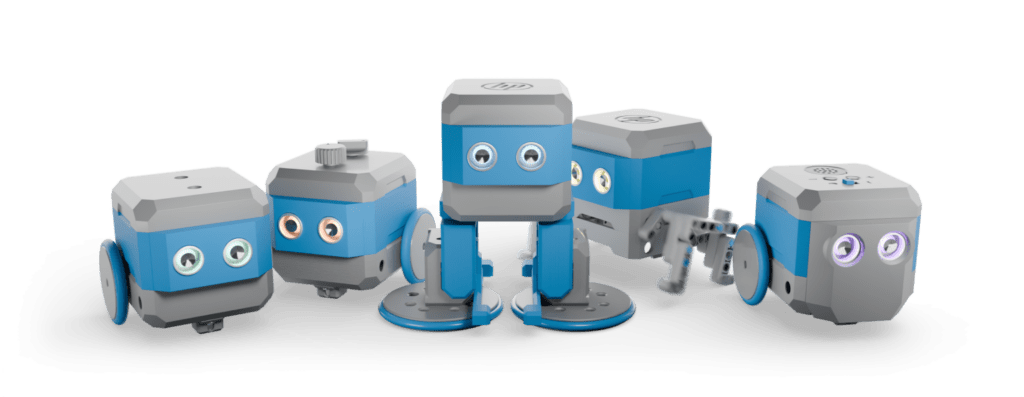
Invent Expansion Kit:
- Das Invent-Kit ist speziell darauf ausgelegt, die Kreativität der Benutzer zu fördern. Es erlaubt die individuelle Anpassung von Ottos Funktionalitäten und Design durch 3D-Druck und zusätzliche Module sowie kompatible Klemmbausteine.
- Benutzer können neue Zubehörteile entwerfen und drucken, um den Roboter einzigartig zu machen.
- Statte Otto mit Beinen aus und bring ihm das Laufen bei oder mache ihn mit Ketten fit für den Outdoor Einsatz im Gelände.

Einsatz im Unterricht:
Otto wird mit umfangreichen Ressourcen geliefert, die von Lehrern entwickelt wurden. Diese Materialien unterstützen Lehrer dabei, einen effektiven MINT-Unterricht zu gestalten, ohne dass Vorkenntnisse erforderlich sind. Der Roboter kann sowohl im Klassenraum als auch zu Hause eingesetzt werden. Die didaktischen Materialien umfassen:
- Lehrpläne: Strukturierte Unterrichtspläne, die den Lehrern helfen, den Unterricht zu planen und durchzuführen.
- Projektideen und Arbeitsblätter: Eine Vielzahl von Projekten, die Schüler dazu anregen, kreativ zu denken und ihre Fähigkeiten zu erweitern.
- Tutorials und Videos: Zusätzliche Lernmaterialien, die Schülern helfen, komplexe Konzepte besser zu verstehen.
Fazit:
Der HP Robots Otto ist ein hervorragendes Werkzeug zur Förderung von technischem Verständnis und Kreativität bei Schülern. Durch seine modulare Bauweise und die vielfältigen Programmiermöglichkeiten bietet er eine praxisorientierte Lernerfahrung im Bereich der Robotik und Elektronik. Otto ist ideal für den Einsatz in Schulen und bietet Lehrern eine umfassende Plattform, um Schüler auf eine spannende Reise in die Welt der Technologie zu begleiten. Besonders Ottos Vielseitigkeit durch die 3D-gedruckten Teile und Erweiterungspakete bieten die Möglichkeit, den persönlichen Lernroboter zu bauen.
Playtastic KI-Roboter mit ChatGPT-Assistent
Nach dem Auspacken des Roboters hatte ich den Eindruck, ein Tablet auf Rädern zu meiner Robotersammlung hinzuzufügen. Der kleine Roboter, der sich selbst „Anna“ nennt, wie ich später herausfinden sollte, hatte auf jeden Fall ein Android-Tablet als Gesicht. Ein Tablet-Roboter.
Nach dem Einschalten erwartete mich jedoch nicht der übliche Einrichtungsprozess, wie er bei Android-Geräten üblich ist. Stattdessen wurde ich mit Musik und einem kurzen Animationsvideo begrüßt. Danach landete ich, nach einer kurzen Wartezeit (die nur beim ersten Start auftrat), auf einer kindlich-verspielten App-Übersicht. Meine erste Idee war, im Einstellungsmenü zunächst eine Verbindung zum WLAN herzustellen. Im Handbuch hatte ich bereits gelesen, dass der Roboter nur mit einem 2,4-GHz-WLAN kompatibel ist. Das WLAN meiner FritzBox arbeitet im Dual-Mode und stellt sowohl ein 5-GHz- als auch ein 2,4-GHz-Signal zur Verfügung. Der Roboter fand dieses WLAN, fragte nach dem Passwort, bestätigte die richtige Eingabe und verband sich – allerdings nur für wenige Sekunden, bevor er wieder „nicht verbunden“ anzeigte. Anscheinend mag er ausschließlich reines 2,4-GHz-WLAN. Nachdem ich mein reines 2,4-GHz-WLAN ausgewählt hatte, gab es keine weiteren Verbindungsprobleme.
Die Android-Betriebssystemversion und die installierten Apps waren anscheinend aktuell; zumindest wurden keine Updates gefunden. Neben den vorinstallierten Lern-, Musik- und Spiele-Apps fielen mir direkt die YouTube-(Kids)- und Spotify-App auf. Hier ahnte ich auch etwas Spaß für Erwachsene!
Der erste Start der YouTube-App (nachdem das WLAN eine Internetverbindung bot) forderte leider ein Update der Google-Dienste, was wiederum die Anmeldung mit einem Google-Konto erforderte. Macht es besser nicht wie ich und legt kein neues Google-Konto direkt über das Display des Roboters an. Nutzt stattdessen einen Computer oder euer Smartphone und gebt dem Roboter anschließend nur die Zugangsdaten. Das geht deutlich schneller als über das etwas träge „Tablet“ des Roboters.
Nach der Anmeldung gelang dann auch der Start der YouTube-App. Dabei stellte ich fest, dass es sich um die YouTube-Kids-App handelte, die ich bisher nicht kannte. Die App bietet kindgerechte Videos für verschiedene Altersstufen, aber nicht das vollwertige YouTube-Erlebnis, wie man es beispielsweise vom Fernseher kennt. Es können verschiedene Kinder-/Nutzerprofile angelegt werden, und mit einem „Eltern-Account“ lässt sich genau steuern, welche Videos und Kanäle verfügbar sind oder ob das Kind eigenständig andere Kanäle suchen darf.
Für erwachsene Nutzer bleiben immerhin alle Spotify-Inhalte verfügbar. Die vorinstallierte Spotify-App funktioniert identisch zu der Version auf meinem Smartphone. Der Klang des Roboters ist laut und basslastig; manchmal hört man dadurch das Plastikgehäuse etwas vibrieren. Für Kinder und ältere Karaoke-Fans gibt es in der App „KinderFernsehen“ eine Karaoke-Videosammlung. Ein mitgeliefertes Mikrofon lässt sich an der Rückseite des Roboters einstecken. Nach dem Einschalten des Mikrofons wird der eigene Gesang mit ordentlich Hall-Effekt durch den Roboter wiedergegeben. Ein Anschluss für ein zweites Mikrofon für Duett-Partner ist ebenfalls vorhanden; allerdings wird nur ein Mikrofon mitgeliefert – ein Tablet-Karaoke-Musik-Video-Roboter.
In der KinderFernsehen-App finden sich bekannte Videoreihen (wie Shaun das Schaf), Musik- und Lerninhalte sowie Spiele. Außerhalb dieser App gibt es die üblichen Anwendungen wie Wecker, Stoppuhr oder Bildergalerie sowie diverse weitere Lern-Apps: Rechnen, Malen, Schreiben, Musizieren oder Sprachen lernen – für fast alles gibt es eine App. Und wenn nicht, bietet der „Kinderladen“ eine abgespeckte Version des App-Stores mit Spielen, Lern-Apps und anderen kinderfreundlichen Inhalten. Ein Tablet-Karaoke-Musik-Video-Lern-Roboter also! Andere Android-Apps lassen sich hier jedoch nicht finden. Mir ist es auch nicht gelungen, fremde Apps zu installieren – weder per SD-Karte noch per Browser-Download –, da der integrierte Browser nur vorher freigegebene Webseiten öffnet. Wie man diese hinzufügt, habe ich nicht herausgefunden. Im PIN-geschützten „Elternmodus“ konnte ich zwar installierte Apps ausblenden (quasi vor Kindern verstecken), aber keine neuen Apps „sideloaden“. Es gibt einen erweiterten Modus, der nach mehrfachem Tippen auf die Versionsnummer des Roboters in den Einstellungen erscheint – leider geschützt durch ein mir unbekanntes Passwort. Was sich wohl dahinter verbirgt? Vielleicht die Möglichkeit zum Installieren eigener Apps?
Die App „Musik und Tanz“ öffnet einen Musikplayer, mit dem MP3s – auch von einer eingesteckten SD-Karte – abgespielt werden können. Der Unterschied zur normalen „Musik“-App: Der Roboter tanzt zur abgespielten Musik und fährt mehr oder weniger wild „tanzend“ durch die Gegend. Ich hätte mir an dieser Stelle gewünscht, eigene Bewegungsabläufe programmieren zu können – oder sogar eine Lern-App, die mir das Programmieren des Roboters beibringt und die Möglichkeiten der integrierten Motoren meines „Roboter-Tablets“ nutzbar macht. Vielleicht sogar in Kombination mit der integrierten Kamera einen Linienfolger programmieren? Vielleicht wird hierfür ja irgendwann noch eine passende App entwickelt.
Die integrierte Kamera lässt sich zum Aufnehmen von Fotos und Videos in niedriger Auflösung nutzen. Leider habe ich keine App gefunden, die die Kamera für Bewegungsspiele nutzt – so wie beim Miko 3-Roboter bekannt. Vielleicht dürfen wir auch hier noch auf Erweiterungen per App hoffen?
Und dann gibt es noch den ChatGPT-Assistenten-Modus: Auf dem Display erscheint ein Robotergesicht, mit dem man sich auch ohne eingestecktes Mikrofon unterhalten kann. Die Antworten kommen dabei nach etwas Verzögerung von einer ChatGPT-Instanz. Diese scheint auf Unterhaltungen mit Kindern spezialisiert zu sein und schlägt automatisch Themen wie Dinosaurier, Weltraum oder Tiere vor. Jede Antwort liefert direkt Ideen für neue Nachfragen oder Themenvorschläge und führt so aktiv durch das Gespräch. Die ChatGPT-Instanz hat keinen Zugriff auf aktuelle Online-Inhalte und ist ausreichend moderiert: Nicht kindgerechte Themen werden in vielen Fällen ignoriert oder übergangen. Zu genaue Nachfragen oder geschicktes Prompting können jedoch manchmal zumindest fragwürdige Inhalte liefern – allerdings bleiben aktiv vorgeschlagene Themen stets kindgerecht (besonders gerne Dinosaurier). Auch Rekorde aus der Tierwelt oder Umweltphänomene werden als Gesprächsthemen vorgeschlagen.
Ein Tablet-Karaoke-Musik-Video-Lern-KI-Assistenten-Roboter.
Der Roboter ist ein vielseitiges Spielzeug mit gut funktionierenden vorinstallierten Apps. Für Erwachsene gibt es nur wenige Inhalte; diese sind hier aber definitiv nicht die Zielgruppe. Als auffälliger Spotify-Player mit einigen Zusatzfeatures ist der Roboter jedoch auch für Erwachsene interessant – erwartet aber keine Höchstleistung vom integrierten Tablet! Es ist eindeutig nur für die mitgelieferten Apps ausgelegt; diese sind dafür kindgerecht und sicher … solange man keine allzu neugierigen Fragen an den ChatGPT-Assistenten stellt. Insgesamt handelt es sich um ein lehrreiches Spielzeug für Kinder – auch um erste Erfahrungen im Umgang mit KI zu sammeln. Für den Preis bekommt man sonst nur ein günstiges Tablet; hier gibt es jedoch gleich einen ganzen Roboter dazu!
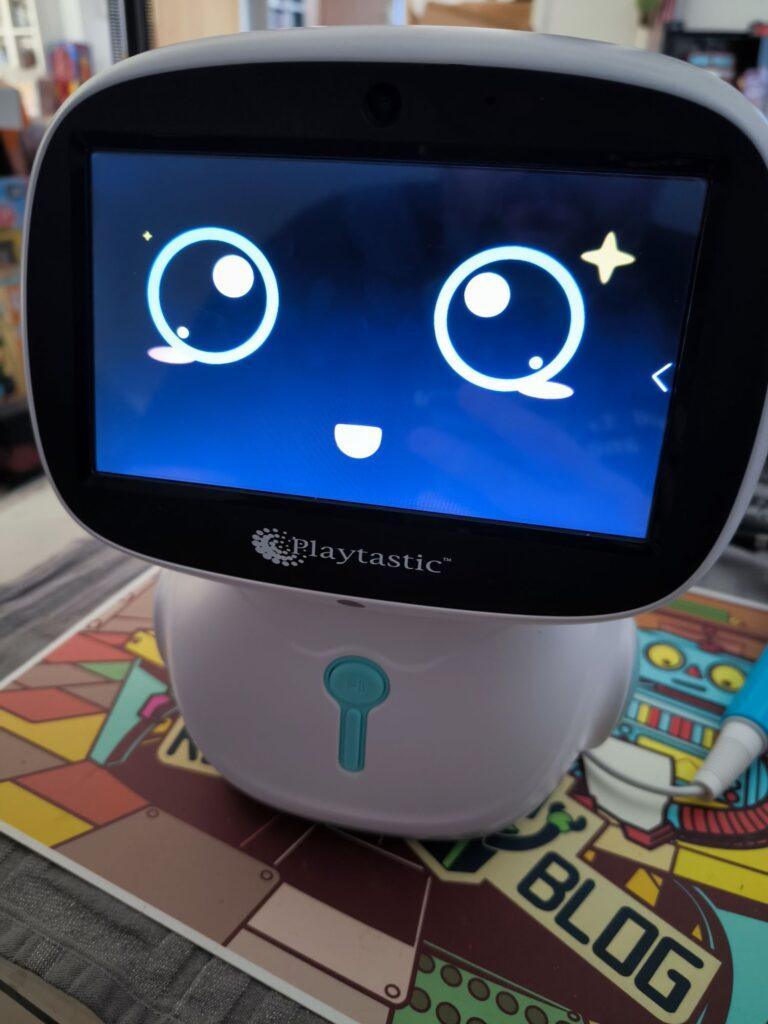
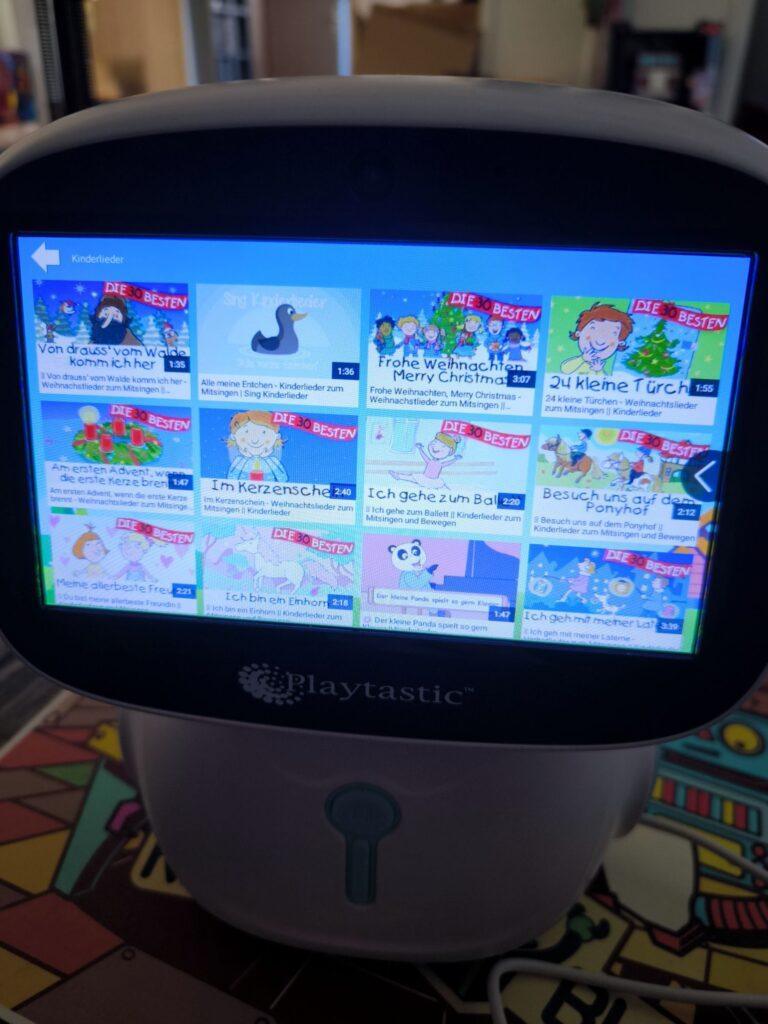
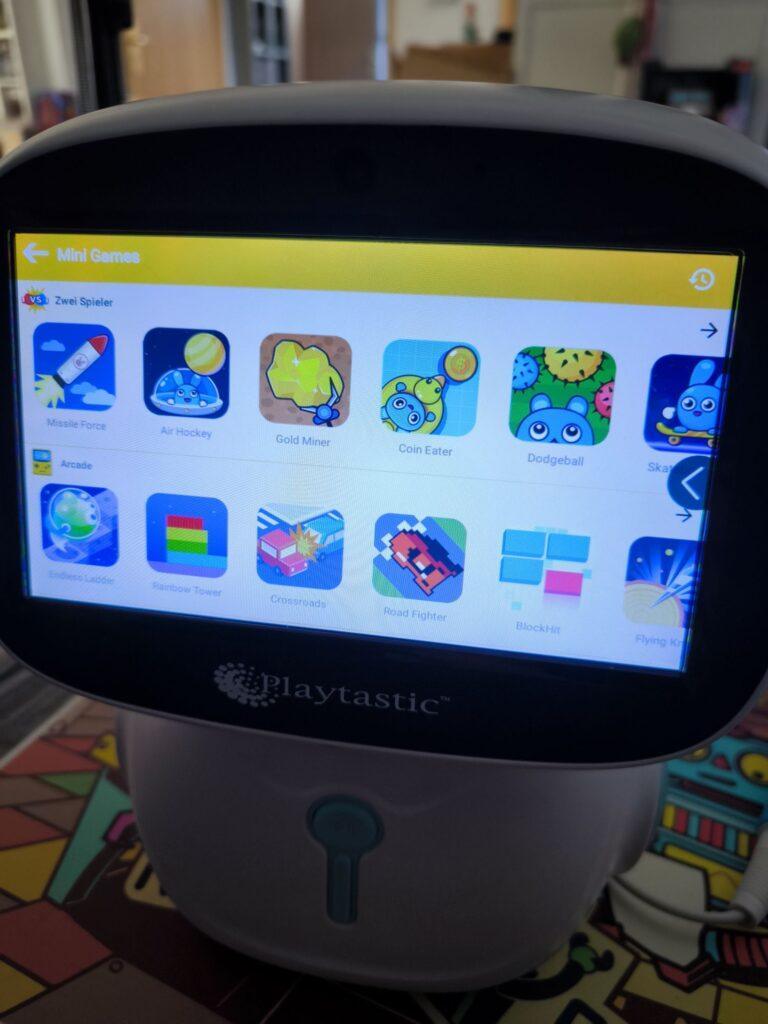
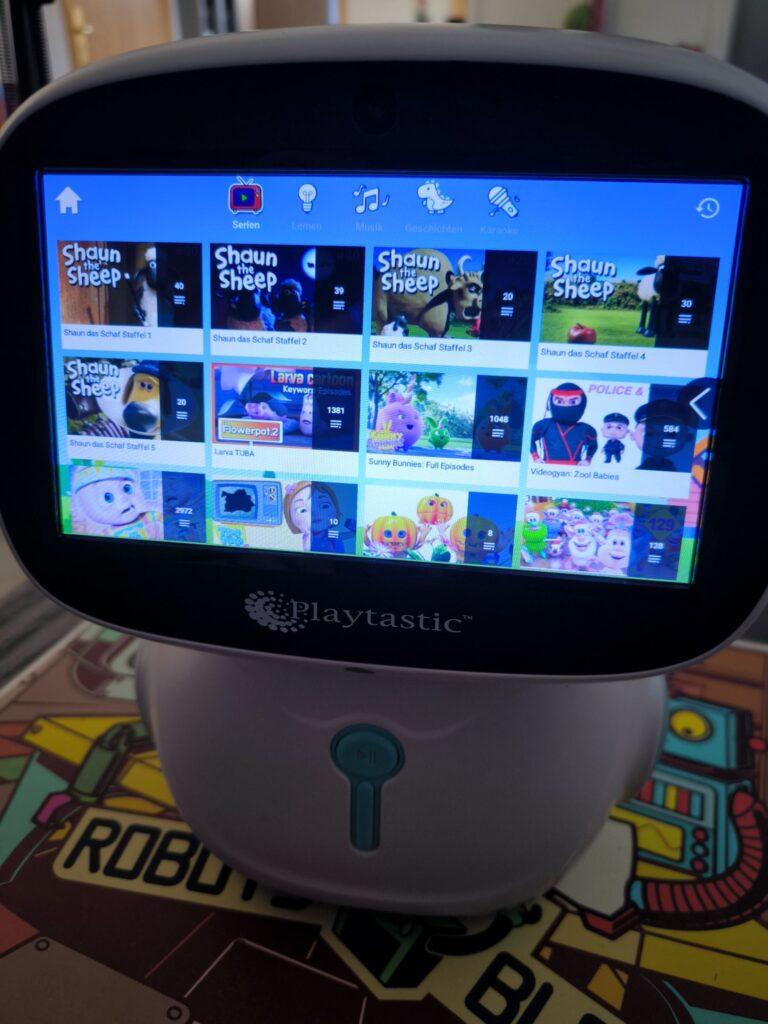
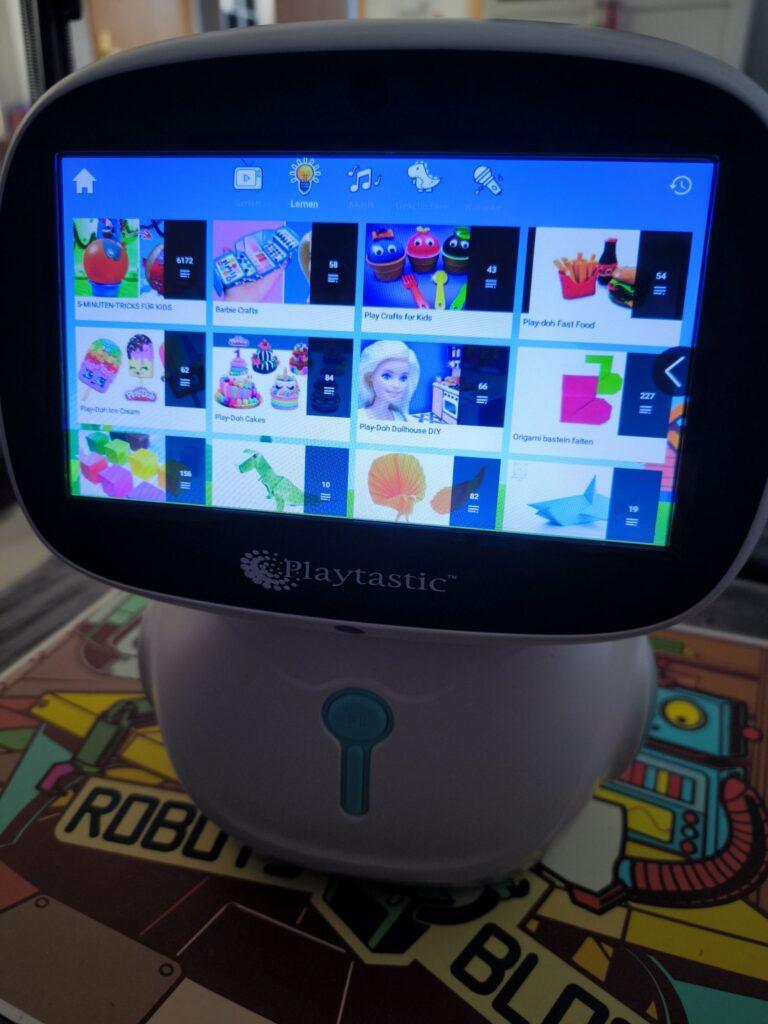
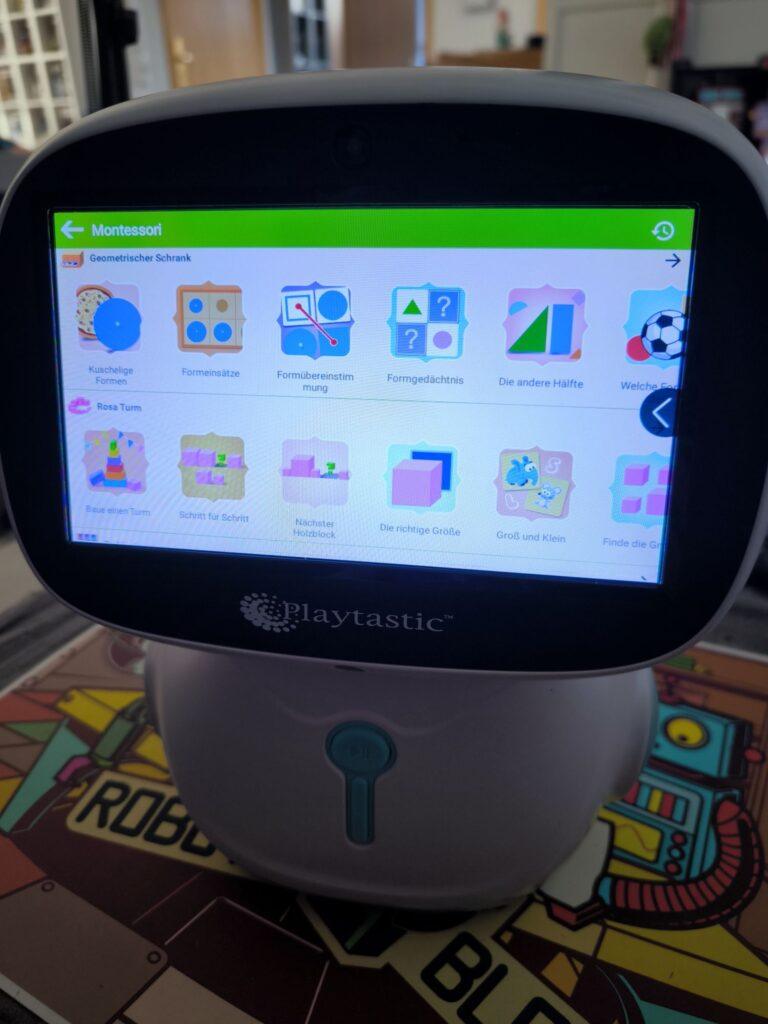
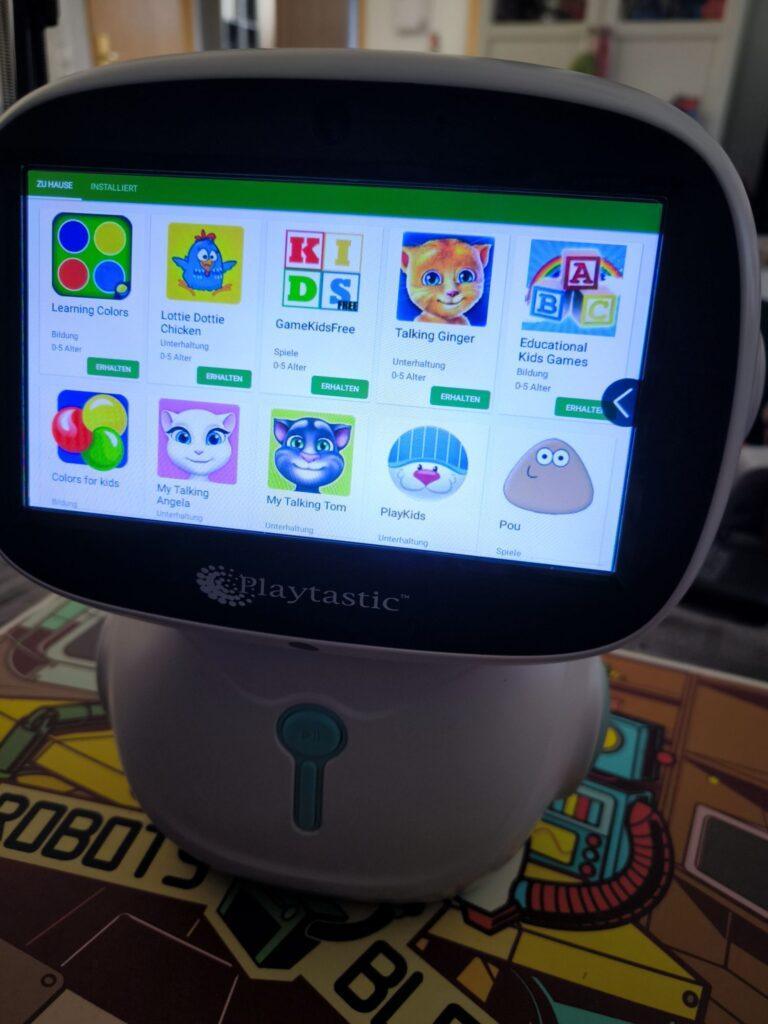
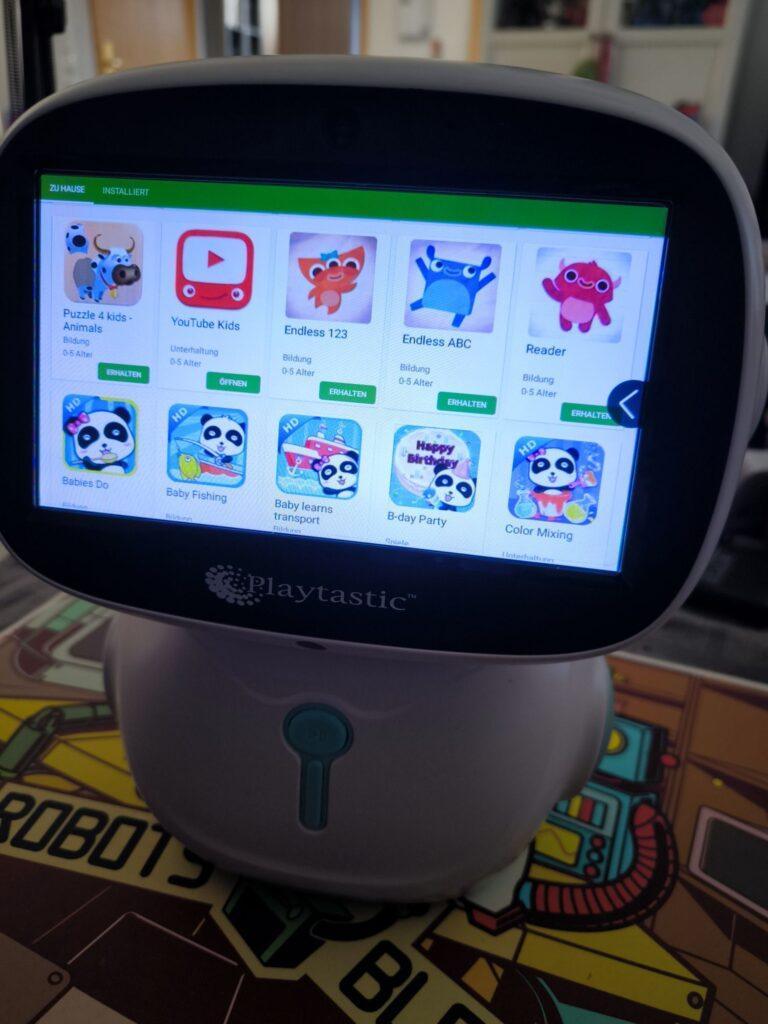
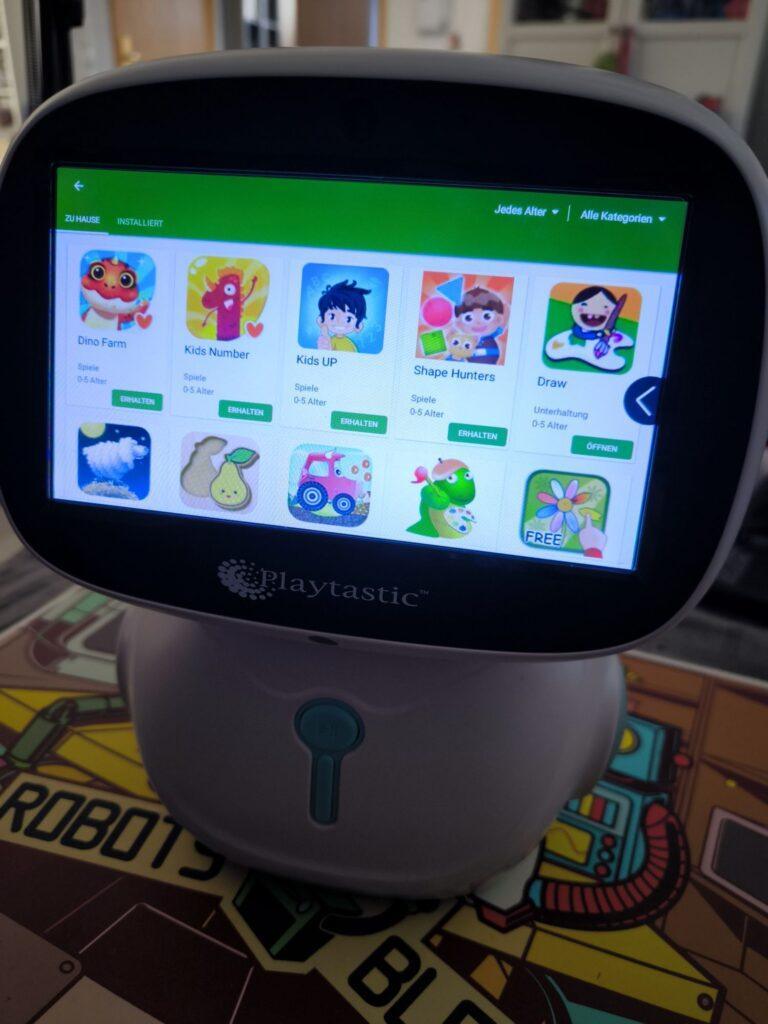
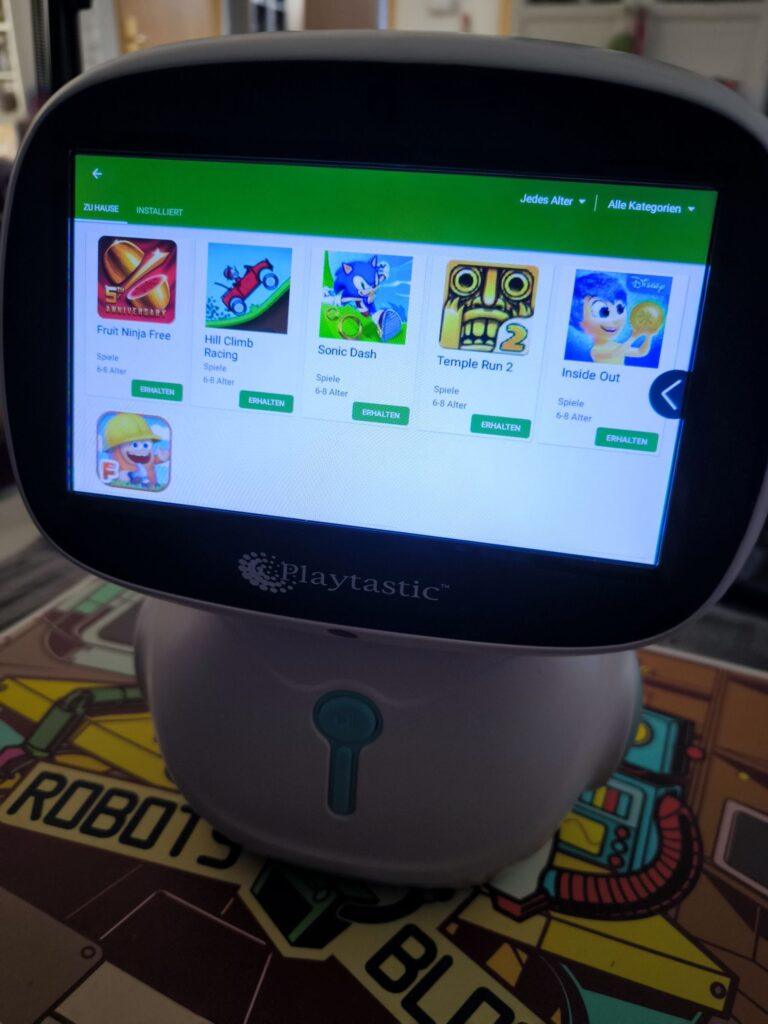
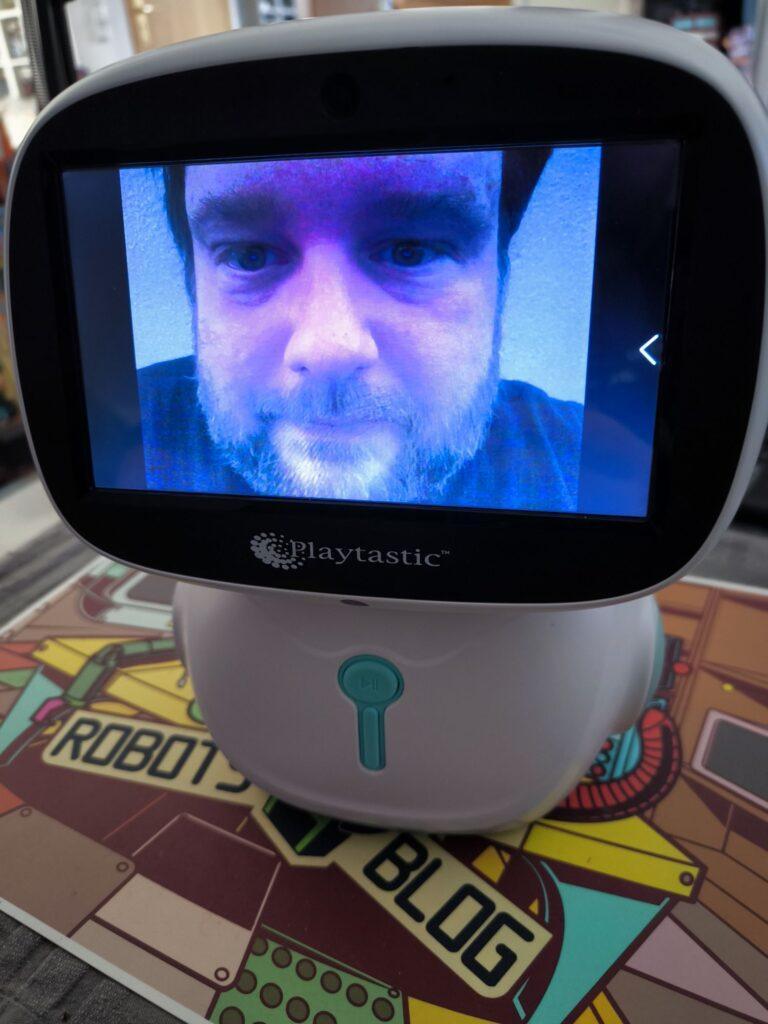
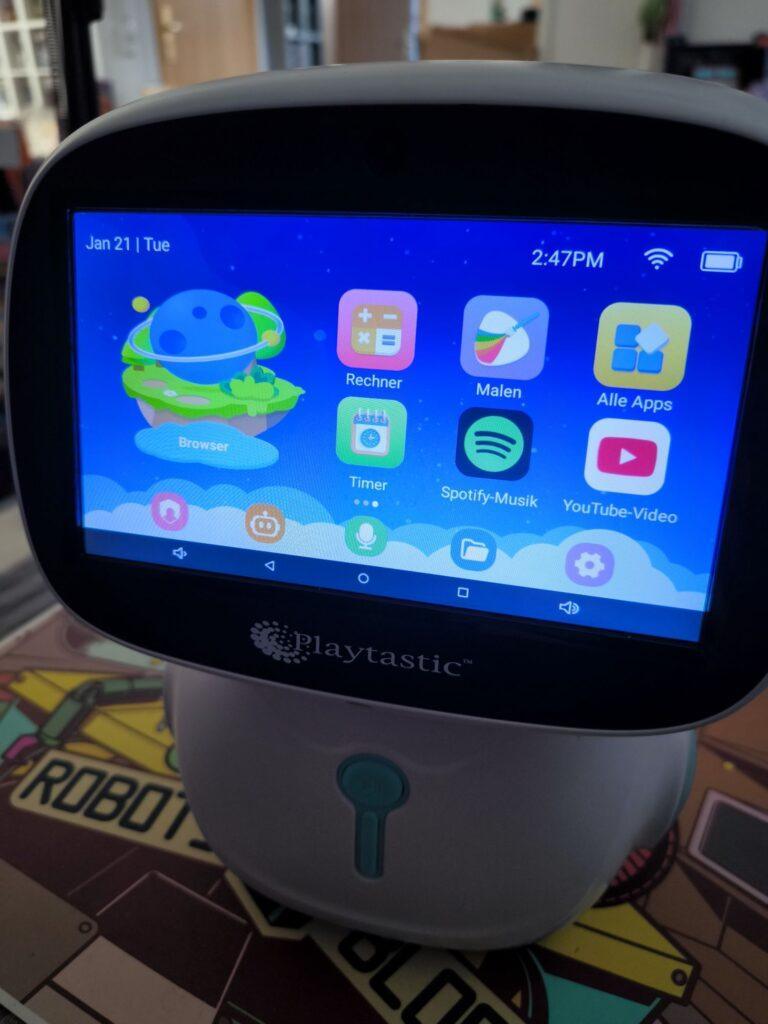
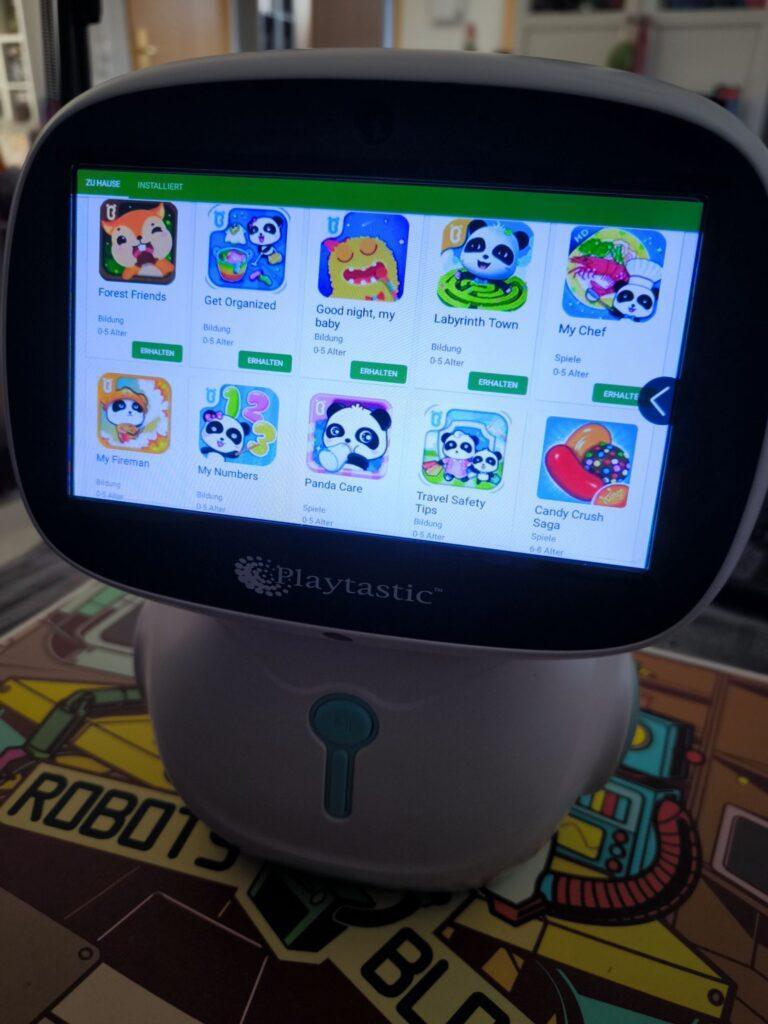
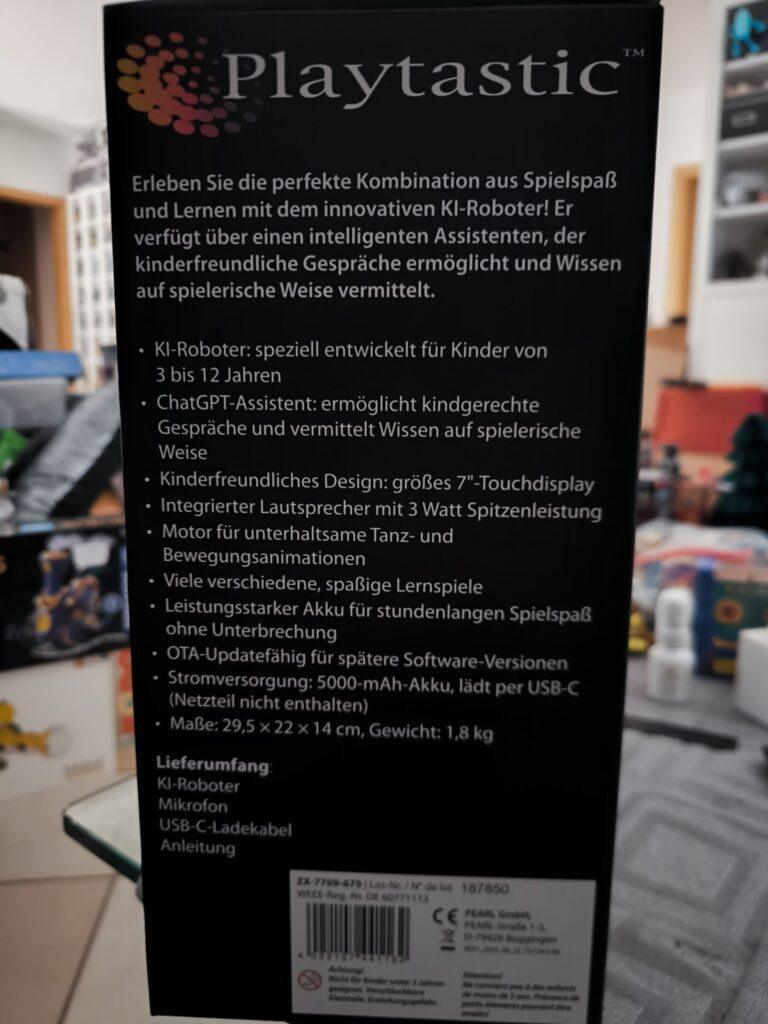
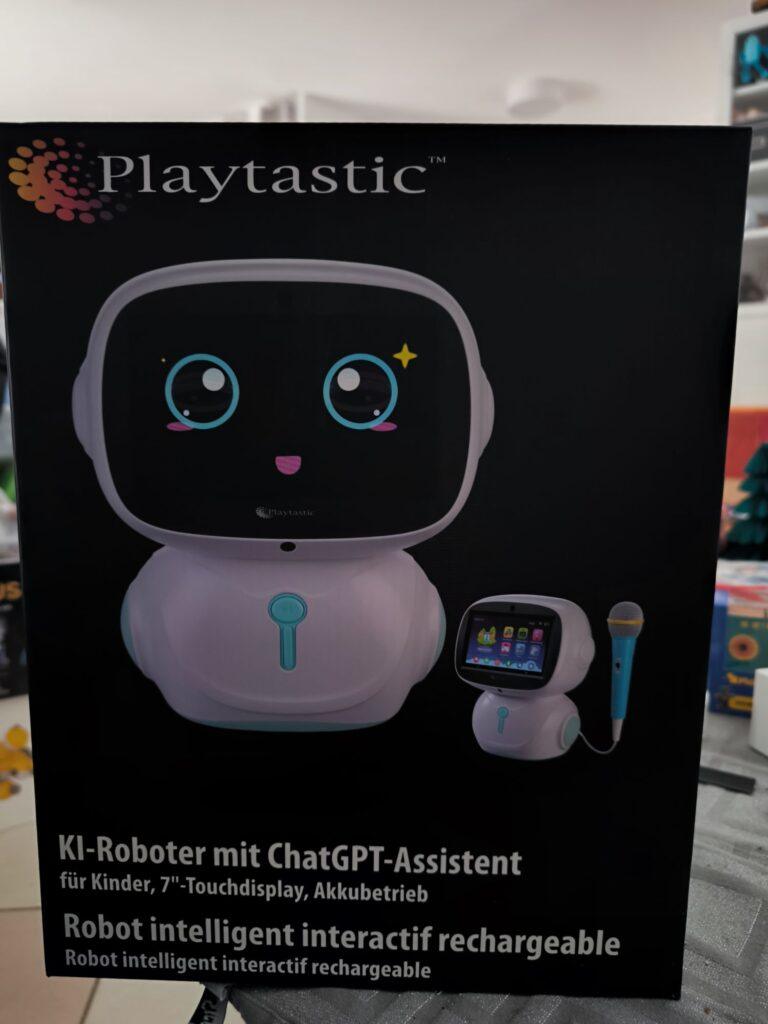
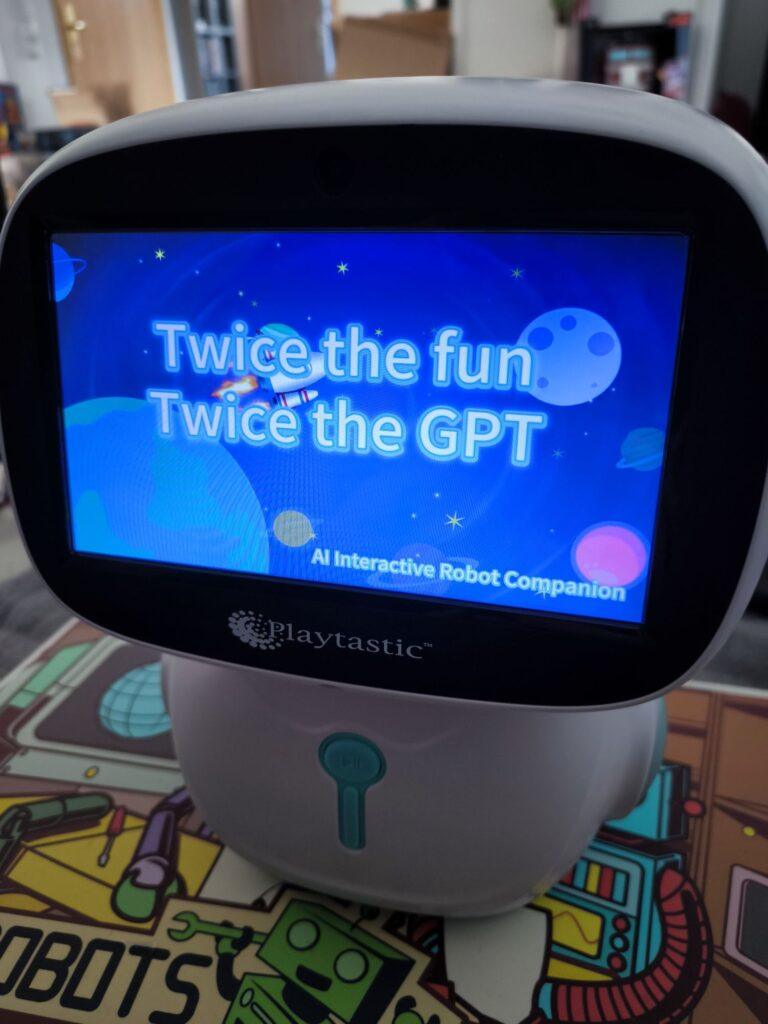
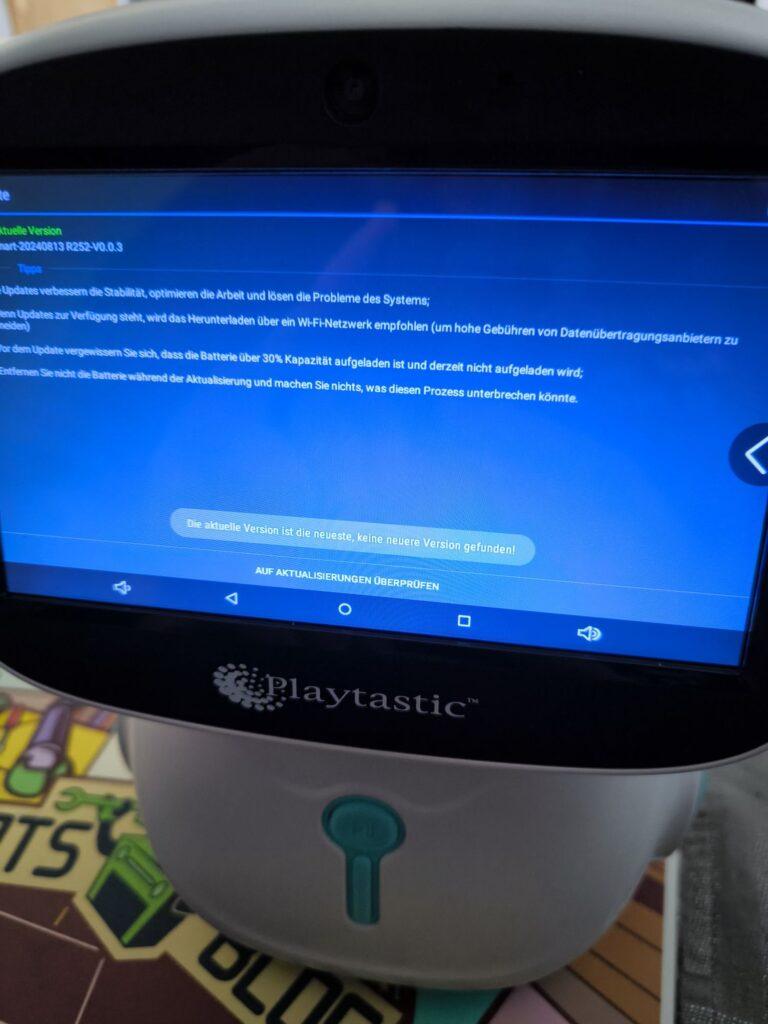
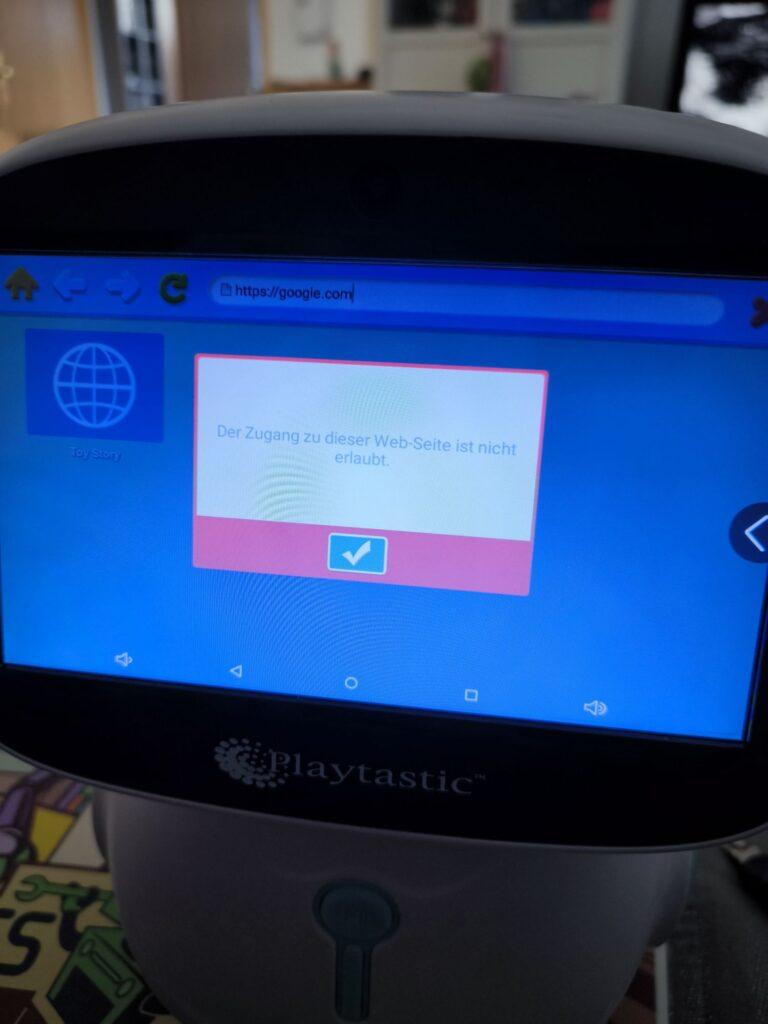
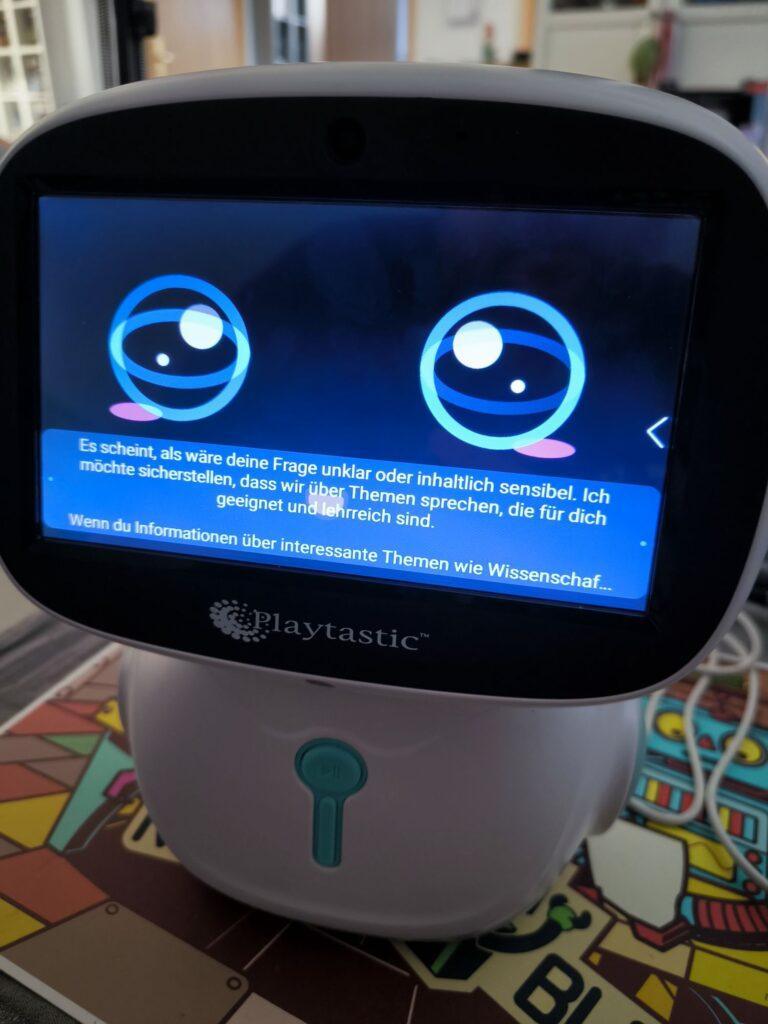
Kosmos Wind-Bots: Viel Wind um kleine Bots
Der Kosmos Wind-Bots Experimentierkasten ist ein faszinierendes Lernspielzeug, das Kinder und Jugendliche auf spannende Weise in die Welt der Mechanik, Physik und Robotik einführt. Dieser Baukasten ermöglicht es, aus einfachen Bauteilen energieeffiziente Roboter zu konstruieren, die allein durch die Kraft des Windes angetrieben werden. Hier erfahren Sie alles Wissenswerte über dieses Produkt.
Was sind Wind-Bots?
Wind-Bots sind kleine Roboter, die durch Windkraft angetrieben werden. Der Experimentierkasten von Kosmos enthält alle notwendigen Materialien und Anleitungen, um bis zu sechs verschiedene Modelle zu bauen. Dabei lernen Kinder spielerisch, wie Energie aus der Umwelt genutzt werden kann, um Bewegung zu erzeugen. Die Bots bewegen sich durch die Luftströmung eines mitgelieferten aufbaubaren „Ventilators“ oder kräftiges Anpusten, wenn man nicht gerade bei Sturm vor die Tür möchte. – eine nachhaltige und innovative Idee.
Inhalt des Experimentierkastens
Der Kosmos Wind-Bots Baukasten bietet eine Vielzahl von Komponenten, die speziell für junge Tüftler entwickelt wurden. Dazu gehören:
- Bauteile aus Kunststoff: Zahnräder, Achsen und Verbindungsstücke für die mechanischen Konstruktionen.
- Getriebe und Rotoren: Diese ermöglichen die Umwandlung von Windenergie in Bewegungsenergie.
- Anleitung: Eine detaillierte Schritt-für-Schritt-Anleitung mit farbigen Illustrationen, die den Aufbau der Modelle erleichtert.
- benötigt wird ein Schraubenzieher und ein Seitenschneider
Die Anleitung erklärt nicht nur den Bau der Modelle, sondern vermittelt auch physikalische Grundlagen wie den Zusammenhang zwischen Windkraft und Bewegung.
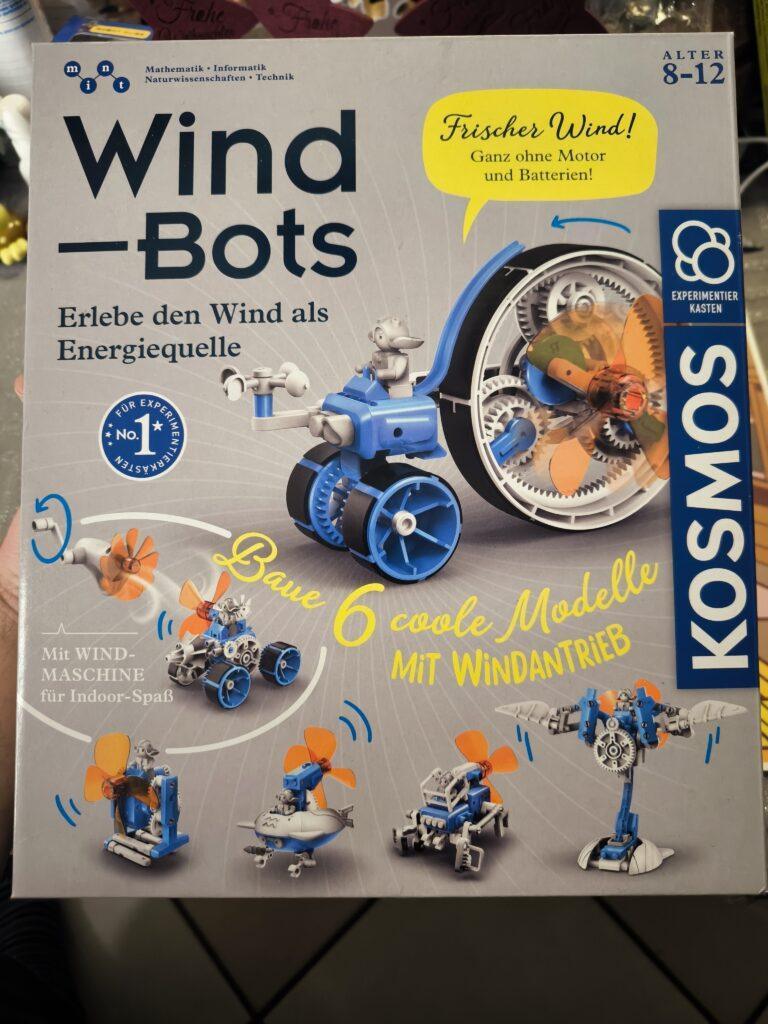
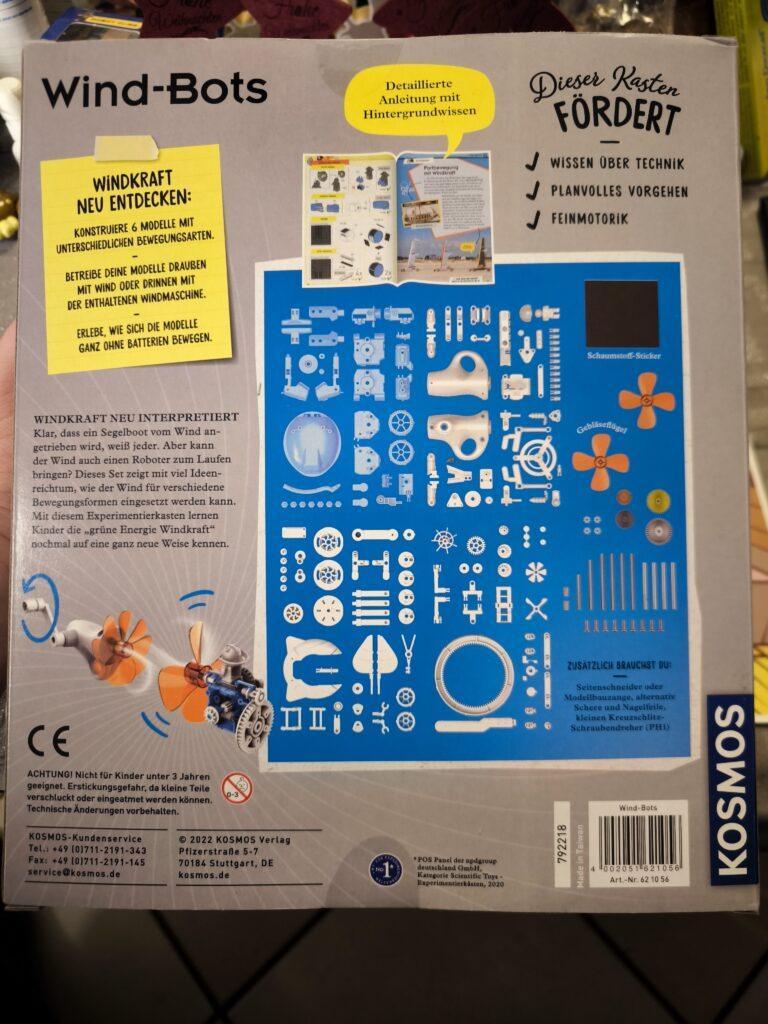
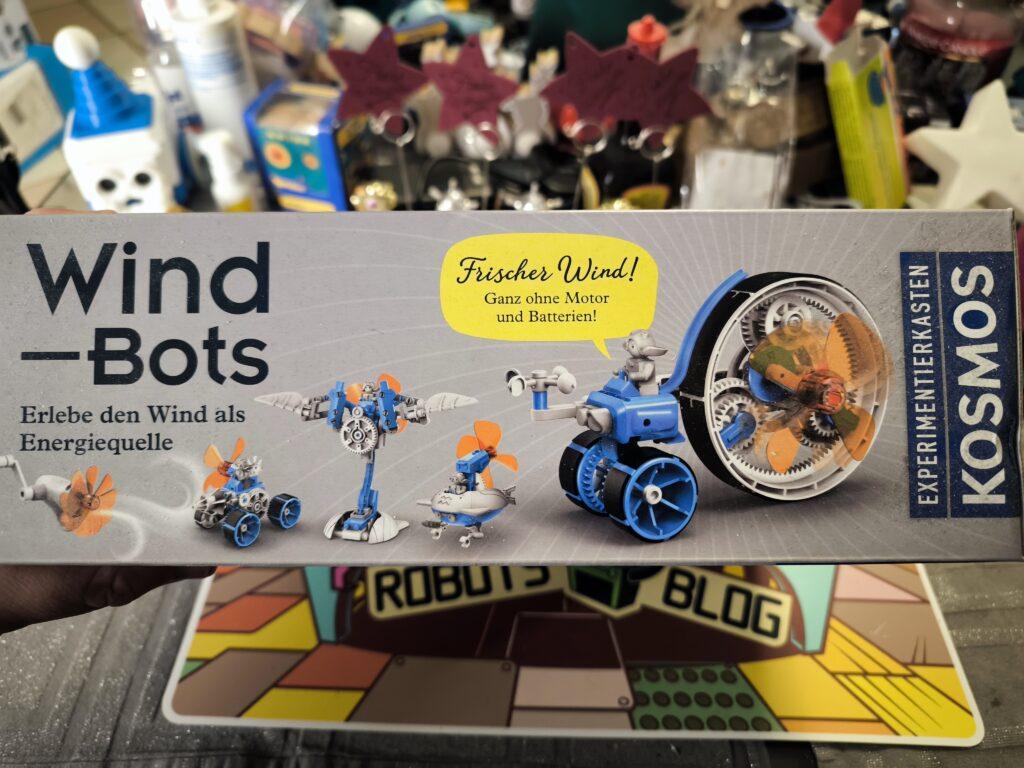
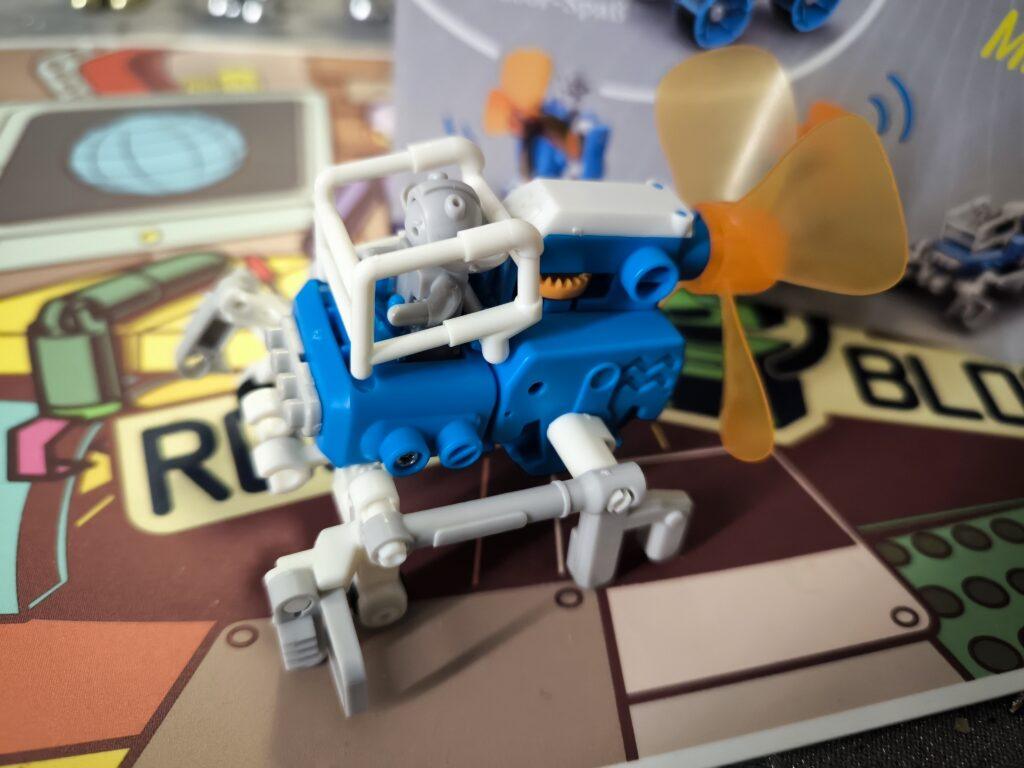
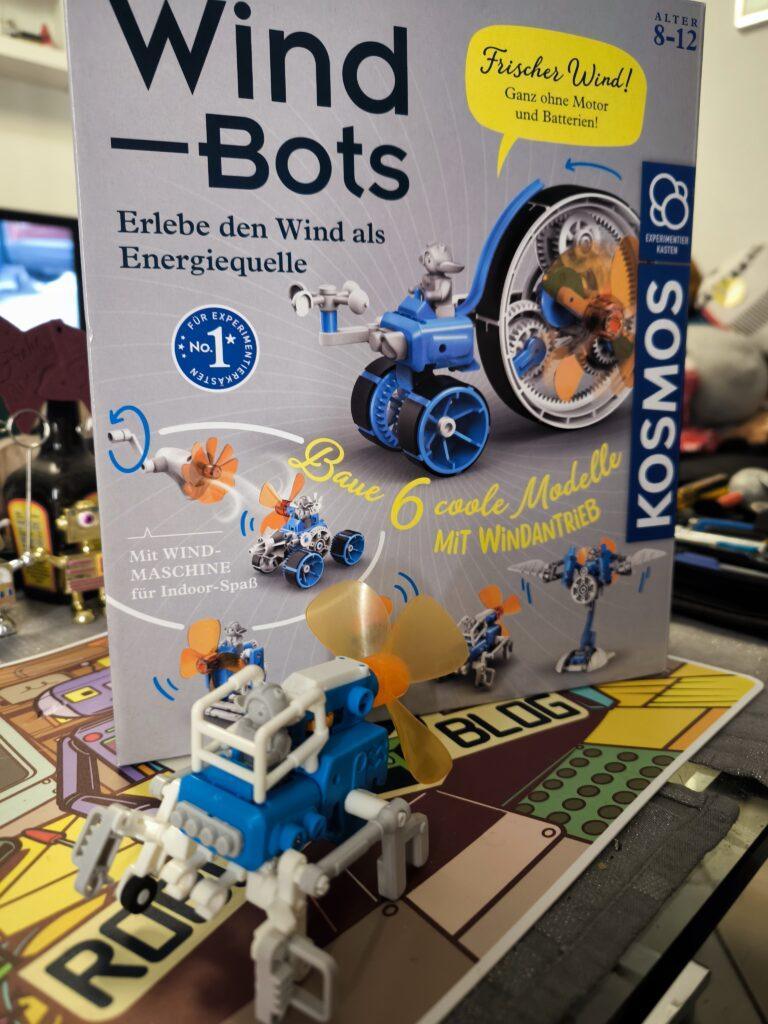
Mögliche Modelle
Mit dem Wind-Bots Baukasten können bis zu zehn verschiedene Roboter gebaut werden. Die Modelle umfassen unter anderem eine Flugmaschine, einen Lauf-Roboter, ein Tricycle, einen Surf-Bo(o)t, einen Quad-Läufer und einen Bohrer-Truck. Alle diese Roboter können aus den über 100 enthaltenen Bauteilen zusammengesetzt und immer wieder umgebaut werden
Jedes Modell zeigt unterschiedliche Prinzipien der Mechanik und Aerodynamik auf, was den Lernfaktor erhöht.
Lernziele und Vorteile
Der Kosmos Wind-Bots Experimentierkasten ist nicht nur ein Spielzeug, sondern auch ein wertvolles Lernwerkzeug. Zu den wichtigsten Vorteilen zählen:
- Förderung des technischen Verständnisses: Kinder lernen grundlegende physikalische Konzepte wie Energieumwandlung und Aerodynamik.
- Kreativität und Problemlösung: Beim Zusammenbau der Modelle werden logisches Denken und Kreativität gefördert.
- Nachhaltigkeitsbewusstsein: Die Nutzung von Windkraft sensibilisiert Kinder für erneuerbare Energien.
- Spaß am Experimentieren: Die interaktiven Modelle machen Wissenschaft greifbar und spannend.
Für wen ist der Baukasten geeignet?
Der Kosmos Wind-Bots Experimentierkasten richtet sich an Kinder ab 8 Jahren. Dank der klaren Anleitungen können auch Anfänger problemlos mit dem Set arbeiten. Es eignet sich hervorragend für technikbegeisterte Kinder und als gemeinsames Projekt für Eltern und Kinder.
VARIOBOT varikabi Steckbausatz
Der VARIOBOT varikabi Steckbausatz ist ein innovatives, analoges Mini-Roboter-Kit, das entwickelt wurde, um Kindern und Jugendlichen ab 8 Jahren einen spielerischen und lehrreichen Einstieg in die Welt der Elektronik und Robotik zu ermöglichen. Dieser in Deutschland entwickelte und produzierte Bausatz zeichnet sich durch seine Vielseitigkeit, einfache Handhabung und pädagogischen Wert aus.
Technische Spezifikationen und Funktionen
Sensorik
Der varikabi ist mit drei hochsensiblen Lichtsensoren ausgestattet. Diese Sensoren können selbst kleinste Helligkeitsunterschiede wahrnehmen, was dem Roboter eine präzise Reaktion auf seine Umgebung ermöglicht.
Steuerung
Ein besonderes Merkmal des varikabi ist seine analoge Steuerung. Im Gegensatz zu vielen modernen Roboter-Kits, die auf digitale Programmierung setzen, funktioniert der varikabi über eine einfache analoge Schaltung mit nur zwei Transistoren. Dies macht den Bausatz besonders geeignet für Einsteiger, da keine Programmierkenntnisse erforderlich sind. Gleichzeitig vermittelt es grundlegende Prinzipien der Elektronik auf anschauliche Weise.
Verhaltensweisen
Der varikabi kann 12 verschiedene Verhaltensweisen zeigen, die durch einfache Umstellungen der Steckverbindungen aktiviert werden können:
- Hindernisvermeidung mit Fluchtverhalten
- Linienfolgen
- Licht- und Schattenverfolgung
- Objekte verschieben
- Kreisen auf hellen oder dunklen Flächen
- Suchen von Lichtquellen
- Flucht vor Lichtquellen
- Verfolgen von Objekten
- Vermeiden von Hindernissen
- Erkennen von Tischkanten
- Bewegen in Richtung heller Flächen
- Bewegen in Richtung dunkler Flächen
Bauweisen
Der varikabi kann in sieben verschiedenen Konfigurationen zusammengebaut werden:
- Käfer
- Hund
- Vogel
- Seelöwe
- Frosch
- Maus
- Giraffe
Jedes Tier hat seine eigene Farbe, achtet beim Bestellen also darauf, welches Tier ihr genau bauen möchtet!
Montage und Handhabung
Einfacher Aufbau
Der varikabi ist als Steckbausatz konzipiert, was bedeutet, dass alle Teile ohne Löten zusammengesteckt werden können. Dies macht den Bausatz sicher und einfach in der Handhabung, selbst für jüngere Kinder. Für den Aufbau werden lediglich eine kleine Zange und ein Seitenschneider benötigt.
Benötigtes Zubehör
Zum Betrieb des Roboters wird eine 9V-Batterie benötigt, die nicht im Lieferumfang enthalten ist. Mit einer Batterie kann der varikabi bis zu 12 Stunden lang betrieben werden, was für ausgiebiges Experimentieren und Spielen sorgt.
Pädagogischer Wert und Einsatzmöglichkeiten
Auszeichnungen
Der varikabi wurde mit dem renommierten „spiel gut“-Siegel ausgezeichnet. Diese Auszeichnung unterstreicht den hohen pädagogischen Wert des Bausatzes und bestätigt seine Eignung als lehrreiches Spielzeug.
MINT-Förderung
Der Bausatz eignet sich hervorragend zur Förderung von MINT-Fähigkeiten (Mathematik, Informatik, Naturwissenschaften und Technik). Durch den praktischen Umgang mit dem varikabi lernen Kinder grundlegende Konzepte der Elektronik, Mechanik und Robotik kennen. Erlernte analoge Schaltungen lassen sich später mit einem anderen digitalen, programmierbaren Robotersystem nachstellen und in Code übertragen.
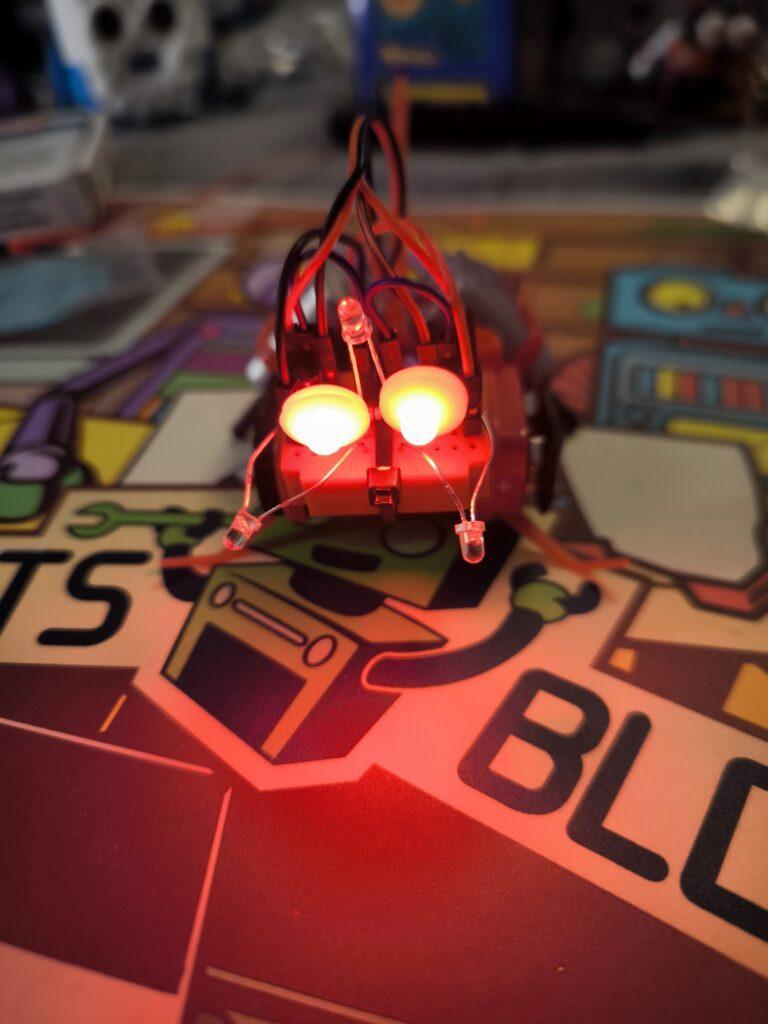
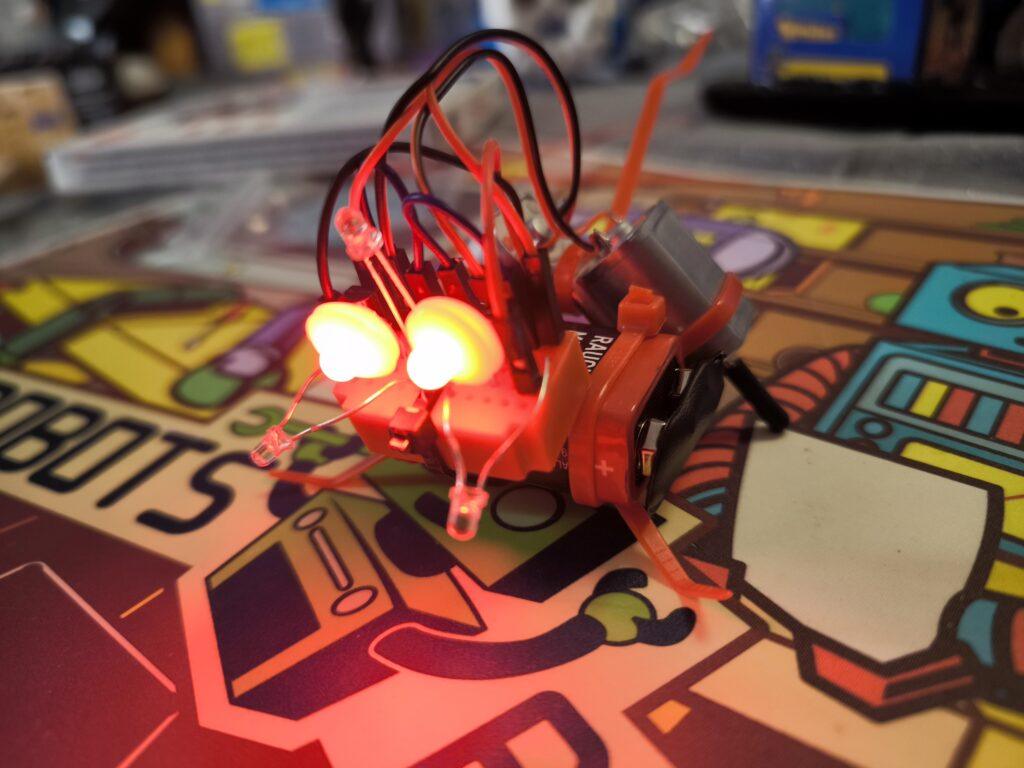
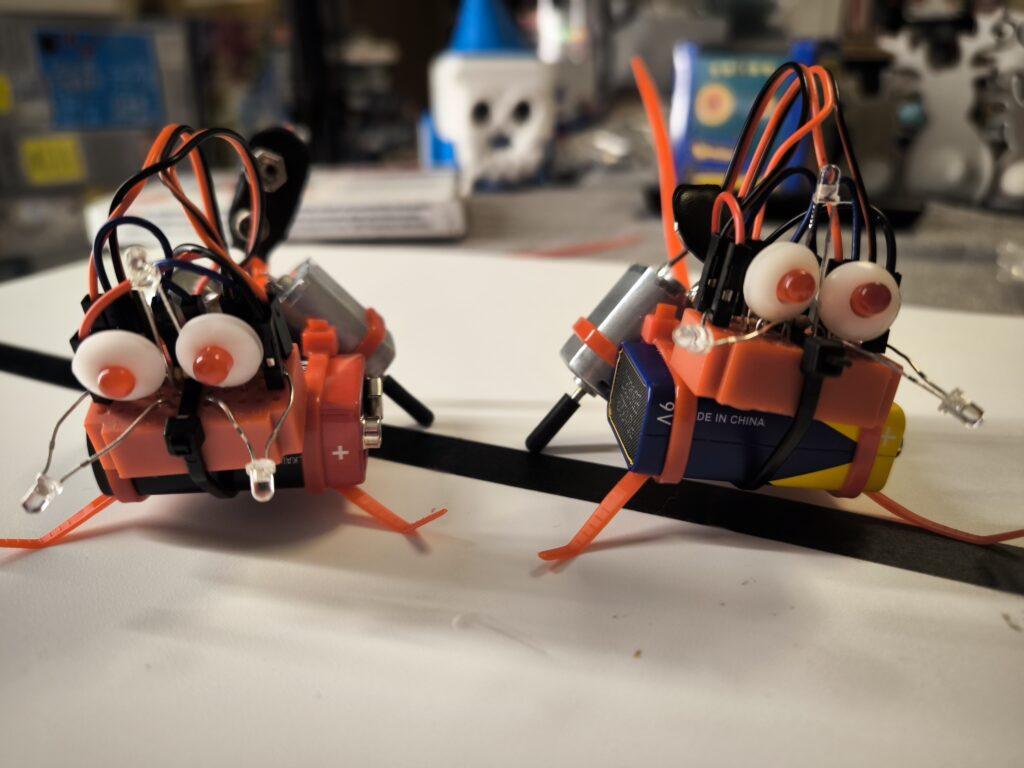
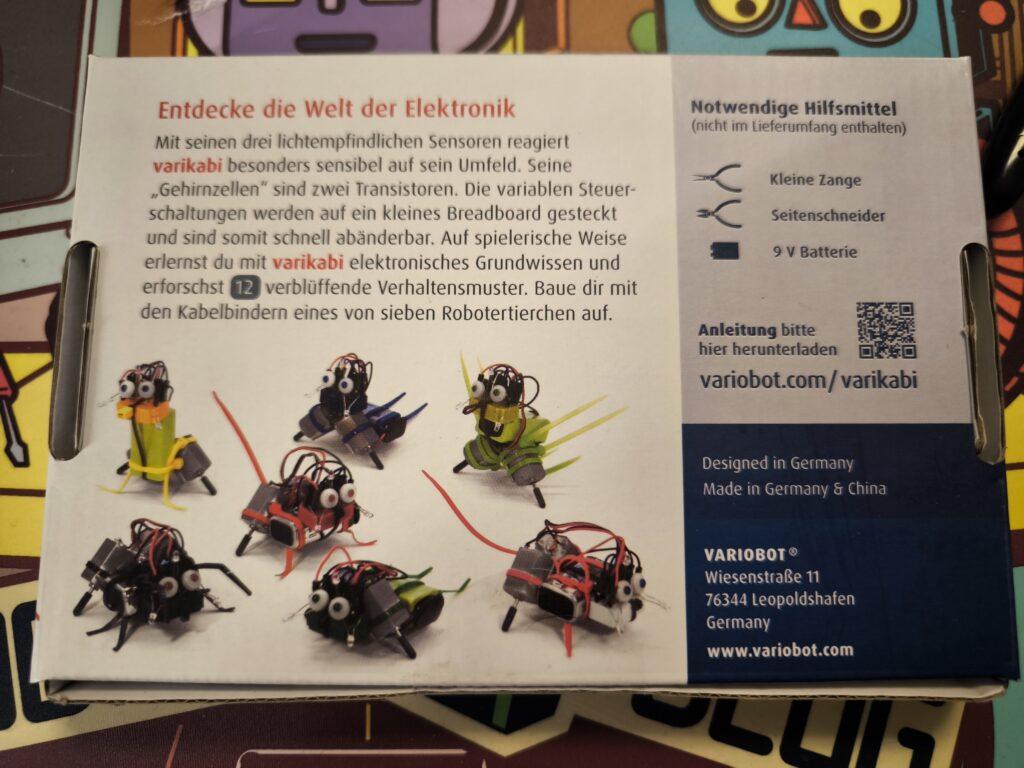
Varianten und Erweiterungen
varikabi FT
Neben dem Standardmodell gibt es auch eine Variante namens varikabi FT, die mit Fischertechnik-Bausteinen kompatibel ist. Dies eröffnet zusätzliche Möglichkeiten zur Erweiterung und Anpassung des Roboters.
Zubehör und Ersatzteile
VARIOBOT bietet verschiedene Zubehör- und Ersatzteile an, um den Roboter zu erweitern oder bei Bedarf zu reparieren. Dies verlängert die Nutzungsdauer und ermöglicht kontinuierliches Lernen und Experimentieren.
Fazit
Der VARIOBOT varikabi Steckbausatz ist ein durchdachtes, vielseitiges und pädagogisch wertvolles Produkt, das Kindern und Jugendlichen einen spannenden Einstieg in die Welt der Robotik und Elektronik bietet. Durch seine analoge Funktionsweise, die einfache Montage und die Vielzahl an Konfigurationsmöglichkeiten fördert er nicht nur technisches Verständnis, sondern auch Kreativität und problemlösendes Denken. Als in Deutschland entwickeltes und produziertes Produkt steht der varikabi zudem für Qualität und Nachhaltigkeit im Bildungsspielzeugbereich.
HP Robots Otto – Infrared/Line Tracking Sensors Test
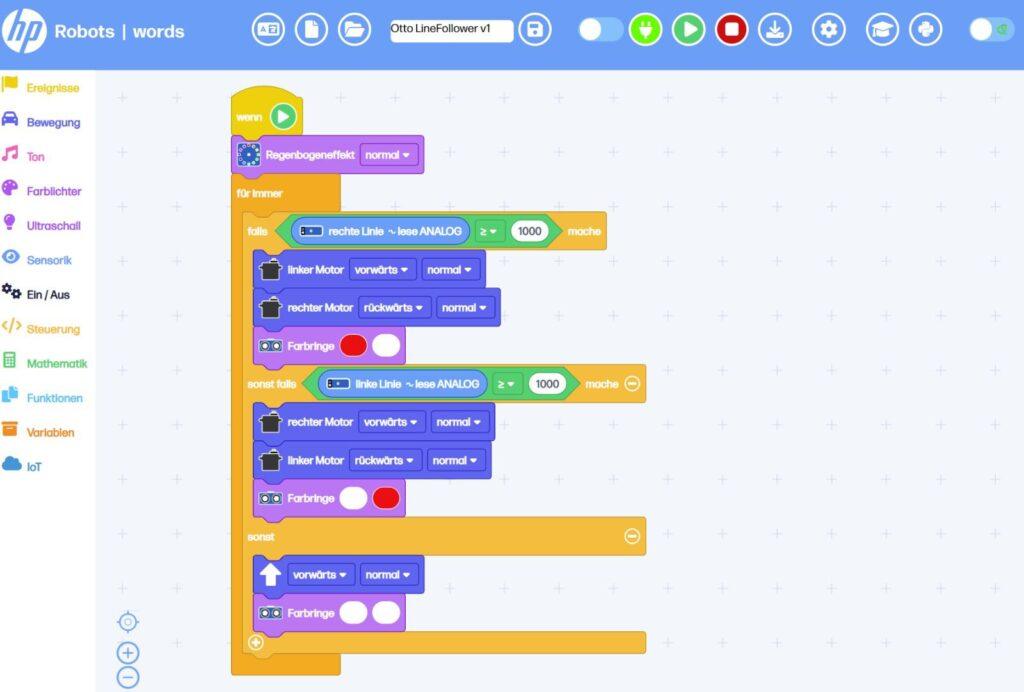
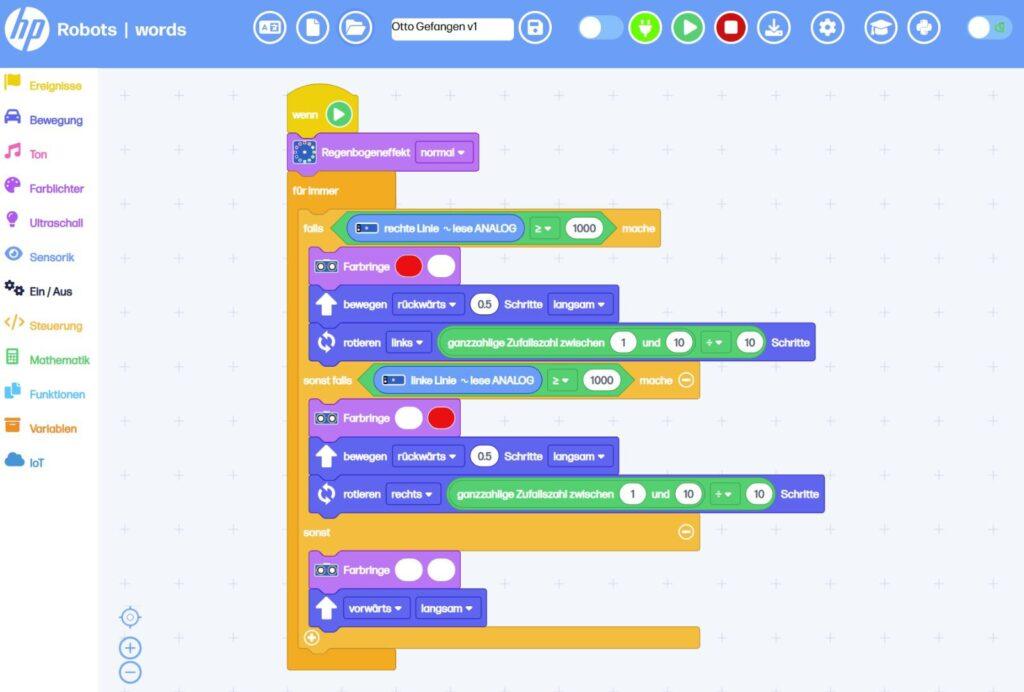
Robots-Blog wishes Merry Christmas and a Happy New Year
Ho-ho-ho! 🎅 The holiday season is here, and even the robots are taking a break from their 24/7 work shifts! 🤖💼 (Well, at least the ones who *don’t* live in the cloud.) May your Christmas be as glitch-free as a perfectly coded algorithm and your New Year as smooth as a freshly updated firmware! Please follow Robots-Blog also in 2025!
Geek Club and CircuitMess in Partnership with Warner Bros. Discovery Global Consumer Product Launch Rick and Morty™ Butter Bot
After a string of successful Kickstarter campaigns, Geek Club and CircuitMess have teamed up once again to launch an exciting new project: an AI-powered desk robot designed especially for Rick and Morty fans.
Zagreb, Croatia – November 2024 – Geek Club and CircuitMess are thrilled to announce the official launch of their Kickstarter campaign for the Butter Bot, a revolutionary AI-powered robot inspired by the one made famous in the popular Adult Swim series, Rick and Morty, and first seen in season 1 episode 9. This innovative product is officially licensed by Warner Bros. Discovery Global Consumer Products (WBDGCP), bringing the iconic Butter Bot to life in a way fans have never seen before.
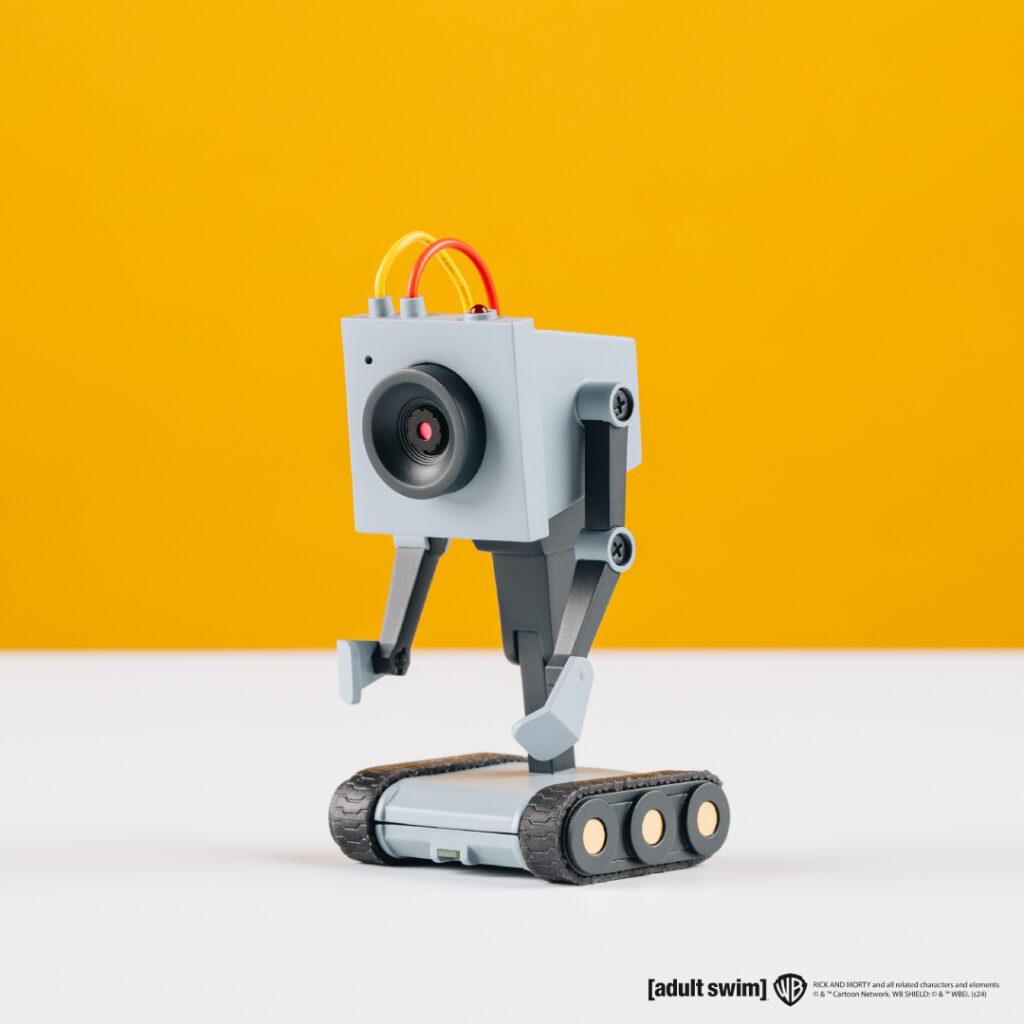
From Screen to Reality: A Partnership That Is Bringing Butter Bot to Life
A shared love of Rick and Morty show between CircuitMess and Geek Club teams led to this project. Both companies saw an opportunity to bring a beloved character to life in a way that was both true to the show and technologically innovative. They chose the Butter Bot because of its iconic status and potential for interactive, educational, and entertaining applications. By turning a simple butter-passing robot into a multifunctional AI companion, they aimed to create a product that would resonate with fans and tech enthusiasts alike, merging humor and functionality seamlessly.
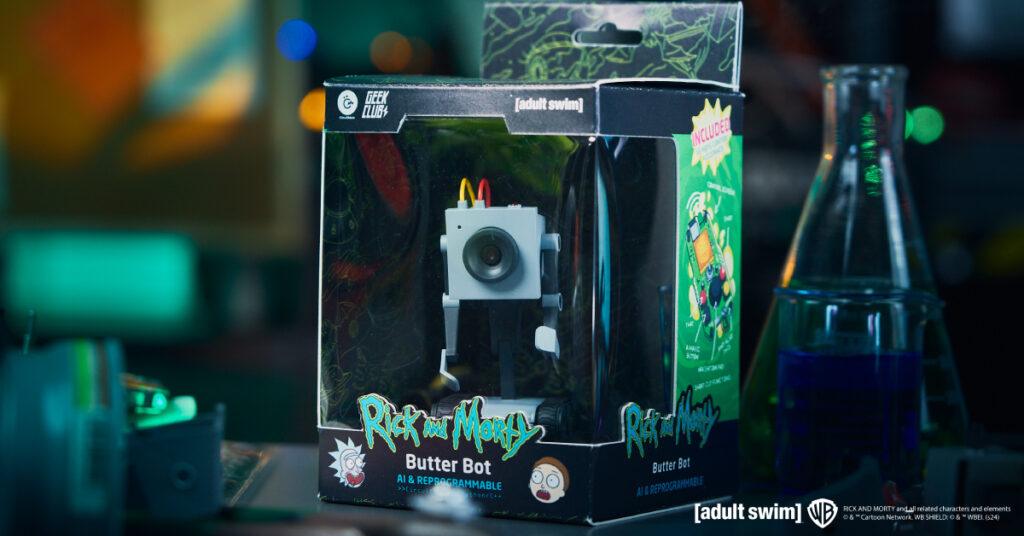
From Mars to Multiverse: The Next Chapter for CircuitMess and Geek Club
The collaboration was a logical union of the two companies after the massive success of the previous Kickstarter – NASA Perseverance AI-powered Mars Rover. Both companies create educational STEM DIY kits for kids and adults in order to make learning STEM skills easy and fun. While CircuitMess is focused primarily on toys, Geek Club’s products are always robot and space-themed.
„Partnering with WBDGCP on this project has been an exciting next step in our collaboration with Circtuit Mess, says Nico, co-founder of Geek Club, sharing his enthusiasm: “The Butter Bot is a testament to what happens when creativity, technology, and fandom collide. We’re excited to see the support and engagement from the community as we launch our Kickstarter campaign.“
Geek Club is an American company that specializes in designing and producing DIY robotics kits that educate their users on soldering and electronics. They focus primarily on space exploration and robotics, all to make learning engineering skills easy and fun for their young and adult audience.
Beyond Butter: Introducing the AI-Powered Butter Bot
The Butter Bot is not just a simple robot with the sole purpose of passing the butter, as originally in the show. It comes with a unique remote controller that allows for precise maneuvering of its movement while also providing a live feed from the bot’s camera. The interactive robot has advanced AI capabilities, making it a versatile companion in any setting.
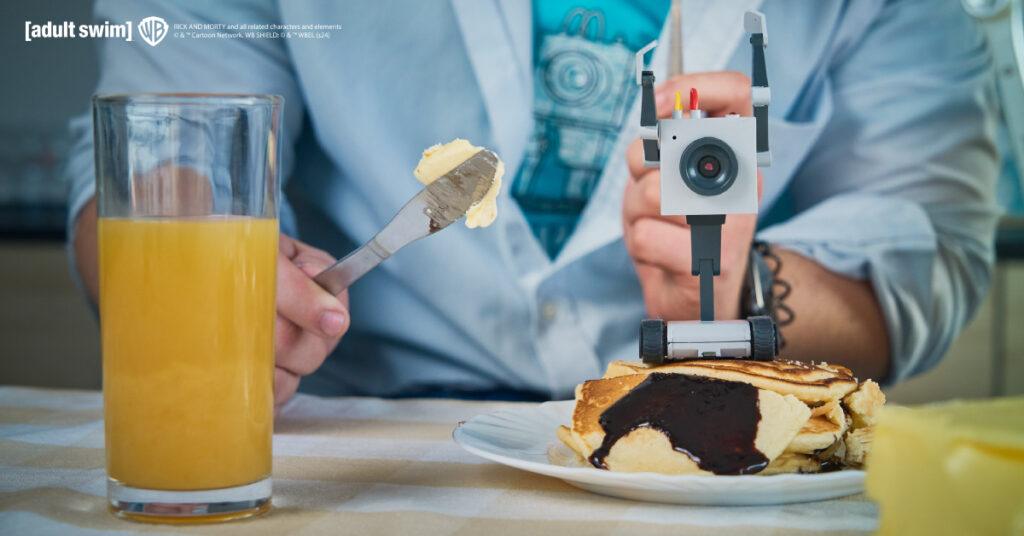
„Bringing the Butter Bot from Rick and Morty into the real world has been an incredible journey,” says Albert Gajšak, CEO of CircuitMess, expressing his excitement about the launch: “We’ve poured our hearts into creating a product that not only honors the original character but also adds a whole new level of interactivity and functionality. We can’t wait to see how fans will use and enjoy it.“
To this day, CircuitMess has developed numerous educational products that encourage kids and adults to create rather than just consume. They successfully delivered 7 Kickstarter campaigns and made thousands of geeks worldwide extremely happy. CircuitMess‘ kits are a unique blend of resources for learning about hardware and software in a fun and exciting way.
The Butter Bot Kickstarter campaign offers backers exclusive early-bird pricing and special rewards.
For more information and to back the project, visit the Butter Bot Kickstarter page here (https://www.kickstarter.com/projects/albertgajsak/rick-and-mortytm-butter-bot-an-ai-powered-desk-robot), or check out the Geek Club and CircuitMess websites to see all their other kits.
About Geek Club
Geek Club is a crew of designers and engineers led by co-founders Nicolas Deladerrière and Nikita Potrashilin. Their mission is to build electronic construction kits for curious minds in over 70 countries worldwide. They are most often inspired by NASA and other Space Agencies of the world and hope to push their fans’ minds further, strengthen their skills, and advance their knowledge of electronics and Space.
Their vision is to create a world of inventors for the next generation of technology with their space-themed STEM kits. Find out more at www.geekclub.com.
Nicolas Deladerrière, co-founder of Geek Club
Mail: [email protected]

About CircuitMess
CircuitMess is a technology startup founded in 2017 by Albert Gajšak and Tomislav Car after a successful Kickstarter campaign for MAKERbuino.
CircuitMess employs young, ambitious people and has recently moved to a new office in Croatia’s capital, Zagreb, searching for talented individuals who will help them create unique electronic products and bring technology to the crowd in a fun and exciting way. Find out more at www.circuitmess.com.
Albert Gajšak, co-founder and CEO of CircuitMess
Mail: [email protected]
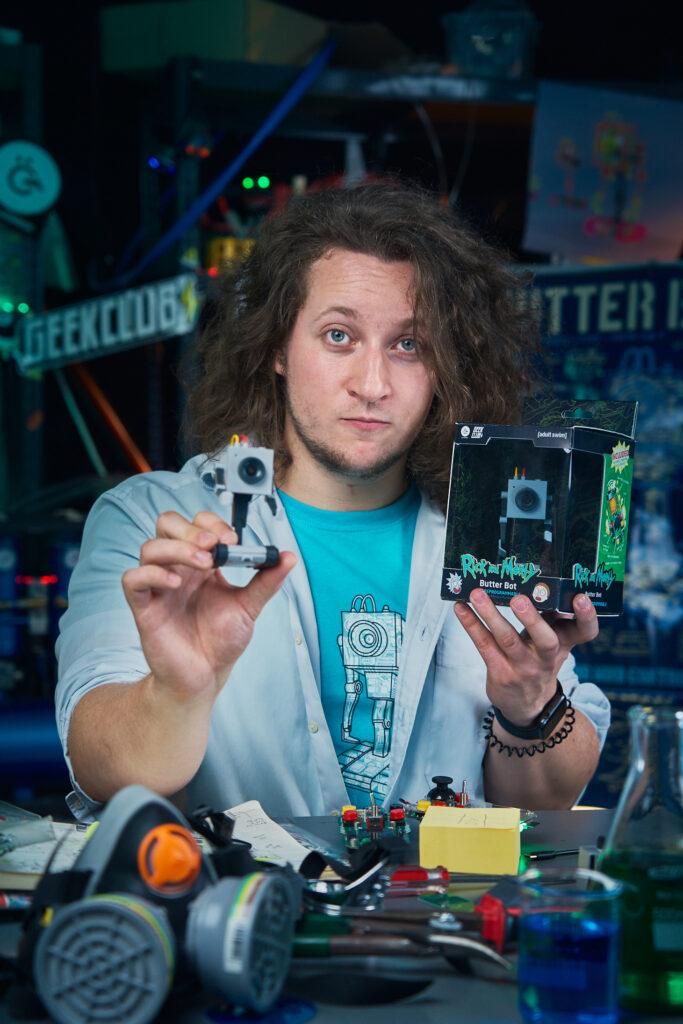
About Rick and Morty
Rick and Morty is the Emmy® award-winning half-hour animated hit comedy series on Adult Swim that follows a sociopathic genius scientist who drags his inherently timid grandson on insanely dangerous adventures across the universe. Rick Sanchez is living with his daughter Beth’s family and constantly bringing her, his son-in-law Jerry, granddaughter Summer, and grandson Morty into intergalactic escapades.
Rick and Morty stars Ian Cardoni, Harry Belden, Sarah Chalke, Chris Parnell, and Spencer Grammer.
About Warner Bros. Discovery Global Consumer Products
Warner Bros. Discovery Global Consumer Products (WBDGCP), part of Warner Bros. Discovery’s Revenue & Strategy division, extends the company’s powerful portfolio of entertainment brands and franchises into the lives of fans around the world. WBDGCP partners with best-in-class licensees globally on award-winning toy, fashion, home décor and publishing programs inspired by the biggest franchises from Warner Bros.’ film, television, animation, and games studios, HBO, Discovery, DC, Cartoon Network, HGTV, Eurosport, Adult Swim, and more. With innovative global licensing and merchandising programs, retail initiatives, and promotional partnerships, WBDGCP is one of the leading licensing and retail merchandising organizations in the world.
Geek Club und CircuitMess bringen dir deinen eigenen Rick & Morty Butter Bot
Nach einer Reihe erfolgreicher Kickstarter-Kampagnen haben sich Geek Club und CircuitMess erneut zusammengeschlossen, um ein aufregendes neues Projekt zu starten: ein AI-gesteuerter Tischroboter, der speziell für Fans von Rick und Morty entwickelt wurde.
Zagreb, Kroatien – November 2024 – Geek Club und CircuitMess freuen sich, den offiziellen Start ihrer Kickstarter-Kampagne für den Butter Bot bekannt zu geben, einen revolutionären Roboter, der von künstlicher Intelligenz gesteuert wird. Er ist inspiriert vom berühmten Roboter aus der beliebten Adult Swim-Serie Rick und Morty, der erstmals in Staffel 1, Folge 9 zu sehen war. Dieses innovative Produkt ist offiziell von Warner Bros. Discovery Global Consumer Products (WBDGCP) lizenziert, wodurch der kultige Butter Bot auf eine Weise zum Leben erweckt wird, wie es Fans noch nie zuvor gesehen haben.
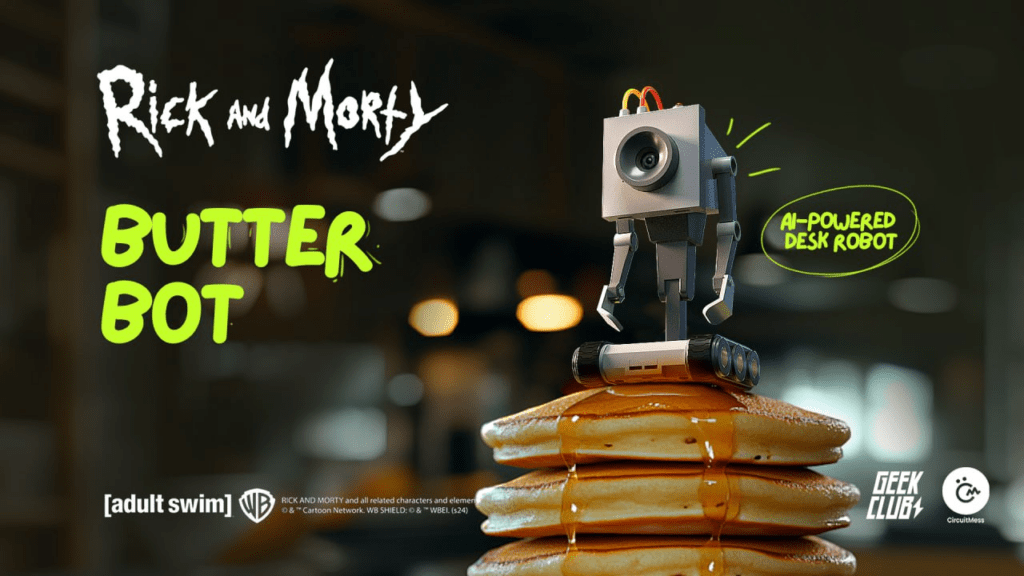
Vom Bildschirm in die Realität: Eine Partnerschaft, die den Butter Bot zum Leben erweckt
Die gemeinsame Liebe zur Serie Rick und Morty unter den Teams von CircuitMess und Geek Club führte zu diesem Projekt. Beide Unternehmen erkannten die Gelegenheit, einen geliebten Charakter auf eine Weise zum Leben zu erwecken, die sowohl der Serie treu bleibt als auch technologisch innovativ ist. Sie wählten den Butter Bot aufgrund seines ikonischen Status und seines Potenzials für interaktive, lehrreiche und unterhaltsame Anwendungen. Durch die Umwandlung eines einfachen Butter-überreichenden Roboters in einen multifunktionalen AI-Begleiter wollten sie ein Produkt schaffen, das sowohl bei Fans als auch bei Technikbegeisterten Anklang findet und nahtlos Humor und Funktionalität miteinander verbindet.
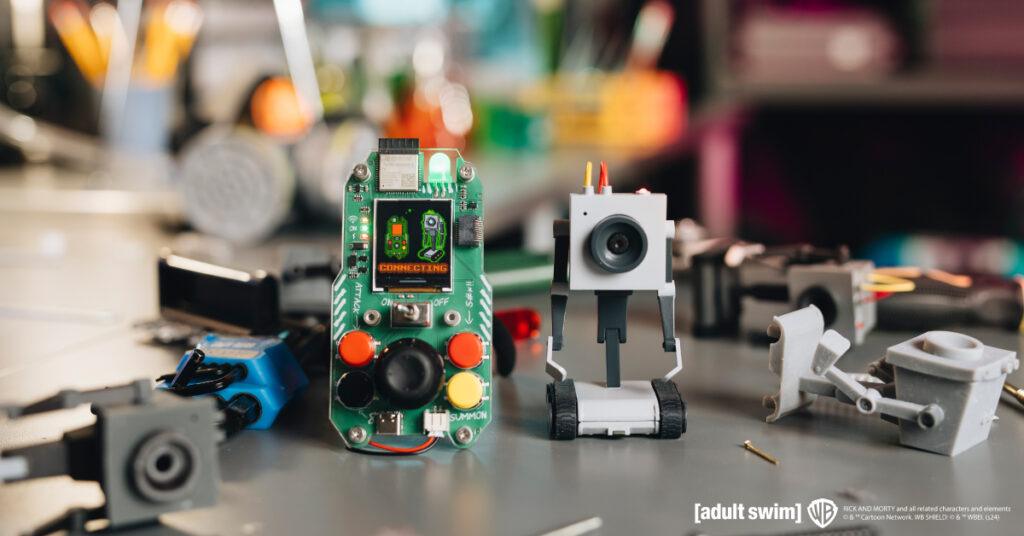
Von Mars bis Multiversum: Das nächste Kapitel für CircuitMess und Geek Club
Diese Zusammenarbeit war ein logischer Schritt für beide Unternehmen nach dem großen Erfolg des vorherigen Kickstarter-Projekts – dem NASA Perseverance AI-powered Mars Rover. Beide Unternehmen erstellen lehrreiche STEM-DIY-Kits für Kinder und Erwachsene, um das Erlernen von STEM-Fähigkeiten einfacher und unterhaltsamer zu gestalten. Während sich CircuitMess hauptsächlich auf Spielzeuge konzentriert, sind die Produkte von Geek Club immer robotik- und raumfahrtthemenbezogen.
„Die Zusammenarbeit mit WBDGCP bei diesem Projekt war ein spannender nächster Schritt in unserer Partnerschaft mit CircuitMess“, sagt Nico, Mitbegründer von Geek Club, und teilt seine Begeisterung: „Der Butter Bot ist ein Beweis dafür, was passiert, wenn Kreativität, Technologie und Fan-Leidenschaft aufeinandertreffen. Wir freuen uns darauf, die Unterstützung und das Engagement der Community zu erleben, während wir unsere Kickstarter-Kampagne starten.“
Geek Club ist ein amerikanisches Unternehmen, das sich auf das Design und die Herstellung von DIY-Roboterbausätzen spezialisiert hat, die ihre Nutzer in Löten und Elektronik schulen. Ihr Fokus liegt hauptsächlich auf Raumfahrt und Robotik, mit dem Ziel, das Erlernen von Ingenieursfähigkeiten für ihr junges und erwachsenes Publikum einfach und unterhaltsam zu machen.
Mehr als Butter: Vorstellung des AI-gesteuerten Butter Bot
Der Butter Bot ist nicht nur ein einfacher Roboter, dessen einzige Aufgabe es ist, wie in der Serie Butter zu überreichen. Er wird mit einer einzigartigen Fernbedienung geliefert, die präzises Manövrieren ermöglicht und gleichzeitig eine Live-Übertragung von der Kamera des Roboters bietet. Dieser interaktive Roboter verfügt über fortschrittliche AI-Funktionen und ist damit ein vielseitiger Begleiter in jeder Umgebung.
„Den Butter Bot aus Rick und Morty in die reale Welt zu bringen, war eine unglaubliche Reise“, sagt Albert Gajšak, CEO von CircuitMess, und drückt seine Begeisterung für den Launch aus: „Wir haben viel Herzblut in die Entwicklung eines Produkts gesteckt, das nicht nur dem Originalcharakter Ehre macht, sondern auch eine völlig neue Ebene der Interaktivität und Funktionalität hinzufügt. Wir können es kaum erwarten zu sehen, wie die Fans ihn nutzen und genießen werden.“
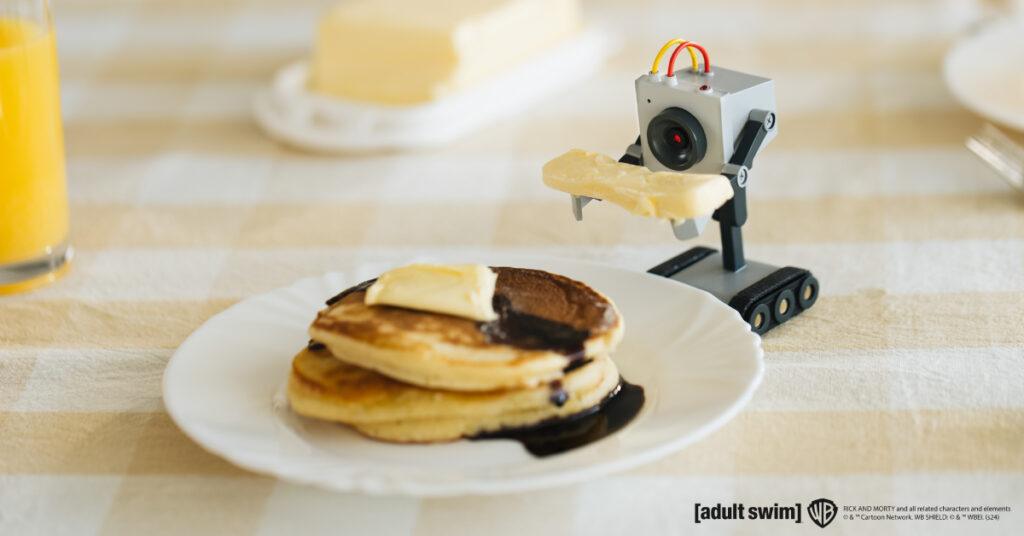
Bis heute hat CircuitMess zahlreiche lehrreiche Produkte entwickelt, die Kinder und Erwachsene dazu ermutigen, zu erschaffen, anstatt nur zu konsumieren. Sie haben erfolgreich 7 Kickstarter-Kampagnen abgeschlossen und tausende Geeks weltweit glücklich gemacht. Die Kits von CircuitMess sind eine einzigartige Kombination von Ressourcen, um auf unterhaltsame und aufregende Weise etwas über Hardware und Software zu lernen.
Die Kickstarter-Kampagne für den Butter Bot bietet Unterstützern exklusive Frühbucherpreise und spezielle Belohnungen.
Für weitere Informationen und zur Unterstützung des Projekts besuchen Sie die Kickstarter-Seite von Butter Bot hier (https://www.kickstarter.com/projects/albertgajsak/rick-and-mortytm-butter-bot-an-ai-powered-desk-robot) oder schauen Sie sich die Websites von Geek Club und CircuitMess an, um alle anderen Kits zu sehen.
Über Geek Club
Geek Club ist ein Team von Designern und Ingenieuren, das von den Mitbegründern Nicolas Deladerrière und Nikita Potrashilin geleitet wird. Ihre Mission ist es, elektronische Konstruktionskits für neugierige Köpfe in über 70 Ländern weltweit zu entwickeln. Ihre Inspiration kommt meist von der NASA und anderen Weltraumagenturen der Welt, und sie hoffen, den Geist ihrer Fans weiter zu fördern, ihre Fähigkeiten zu stärken und ihr Wissen über Elektronik und Weltraum zu erweitern.
Ihre Vision ist es, mit ihren weltraumthematischen STEM-Kits eine Welt von Erfindern für die nächste Technologiegeneration zu schaffen. Mehr erfahren Sie unter www.geekclub.com.
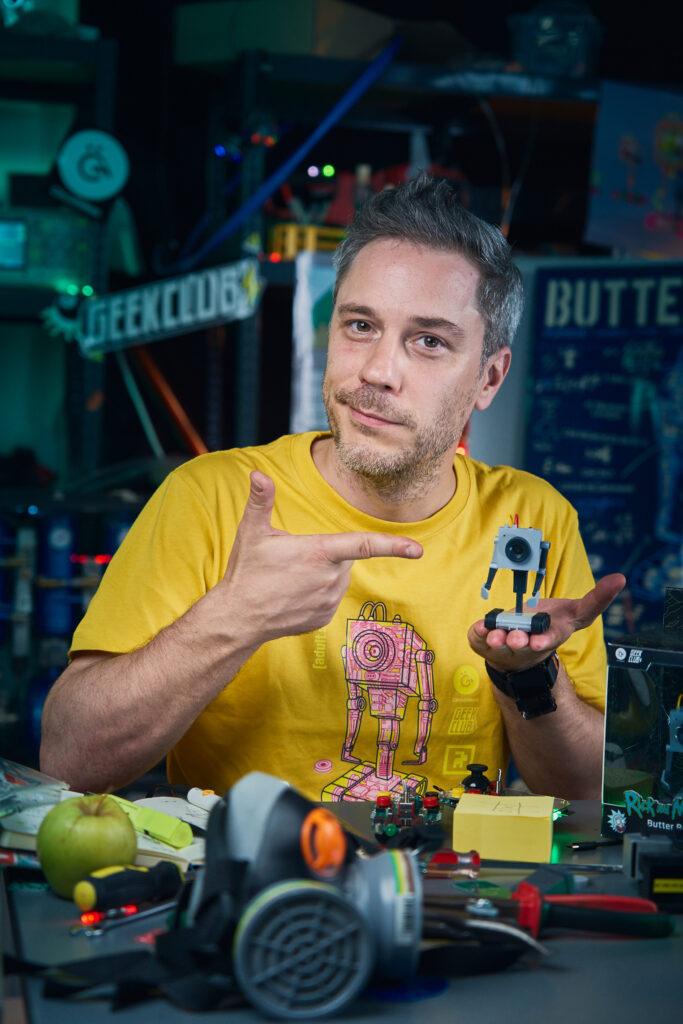
Nicolas Deladerrière, Mitbegründer von Geek Club
E-Mail: [email protected]
Über CircuitMess
CircuitMess ist ein Technologie-Startup, das 2017 von Albert Gajšak und Tomislav Car nach einer erfolgreichen Kickstarter-Kampagne für MAKERbuino gegründet wurde.
CircuitMess beschäftigt junge, ehrgeizige Menschen und ist kürzlich in ein neues Büro in der kroatischen Hauptstadt Zagreb umgezogen. Dort suchen sie nach talentierten Einzelpersonen, die ihnen helfen, einzigartige elektronische Produkte zu entwickeln und Technologie auf unterhaltsame und aufregende Weise für die breite Masse zugänglich zu machen. Mehr erfahren Sie unter www.circuitmess.com.

Albert Gajšak, Mitbegründer und CEO von CircuitMess
E-Mail: [email protected]
Über Rick and Morty
Rick und Morty ist eine Emmy®-preisgekrönte halbstündige animierte Hitkomödie des Senders Adult Swim, die einem soziopathischen genialen Wissenschaftler folgt, der seinen von Natur aus ängstlichen Enkel auf gefährliche Abenteuer im ganzen Universum mitnimmt. Rick Sanchez lebt bei der Familie seiner Tochter Beth und bringt ständig ihren Ehemann Jerry, ihre Enkelin Summer und ihren Enkel Morty in intergalaktische Eskapaden.
In den Hauptrollen spielen Ian Cardoni, Harry Belden, Sarah Chalke, Chris Parnell und Spencer Grammer.
Über Warner Bros. Discovery Global Consumer Products
Warner Bros. Discovery Global Consumer Products (WBDGCP), Teil der Revenue & Strategy-Abteilung von Warner Bros. Discovery, erweitert das mächtige Portfolio der Unterhaltungsmarken und -franchises des Unternehmens in das Leben der Fans auf der ganzen Welt. WBDGCP arbeitet weltweit mit erstklassigen Lizenznehmern an preisgekrönten Programmen für Spielzeug, Mode, Wohnkultur und Verlagswesen, die von den größten Franchises der Warner Bros.-Film-, Fernseh-, Animations- und Spiele-Studios, HBO, Discovery, DC, Cartoon Network, HGTV, Eurosport, Adult Swim und mehr inspiriert sind.
Mit innovativen globalen Lizenz- und Merchandising-Programmen, Einzelhandelsinitiativen und Werbepartnerschaften ist WBDGCP eine der führenden Organisationen für Lizenzierung und Einzelhandelsmerchandising weltweit.
